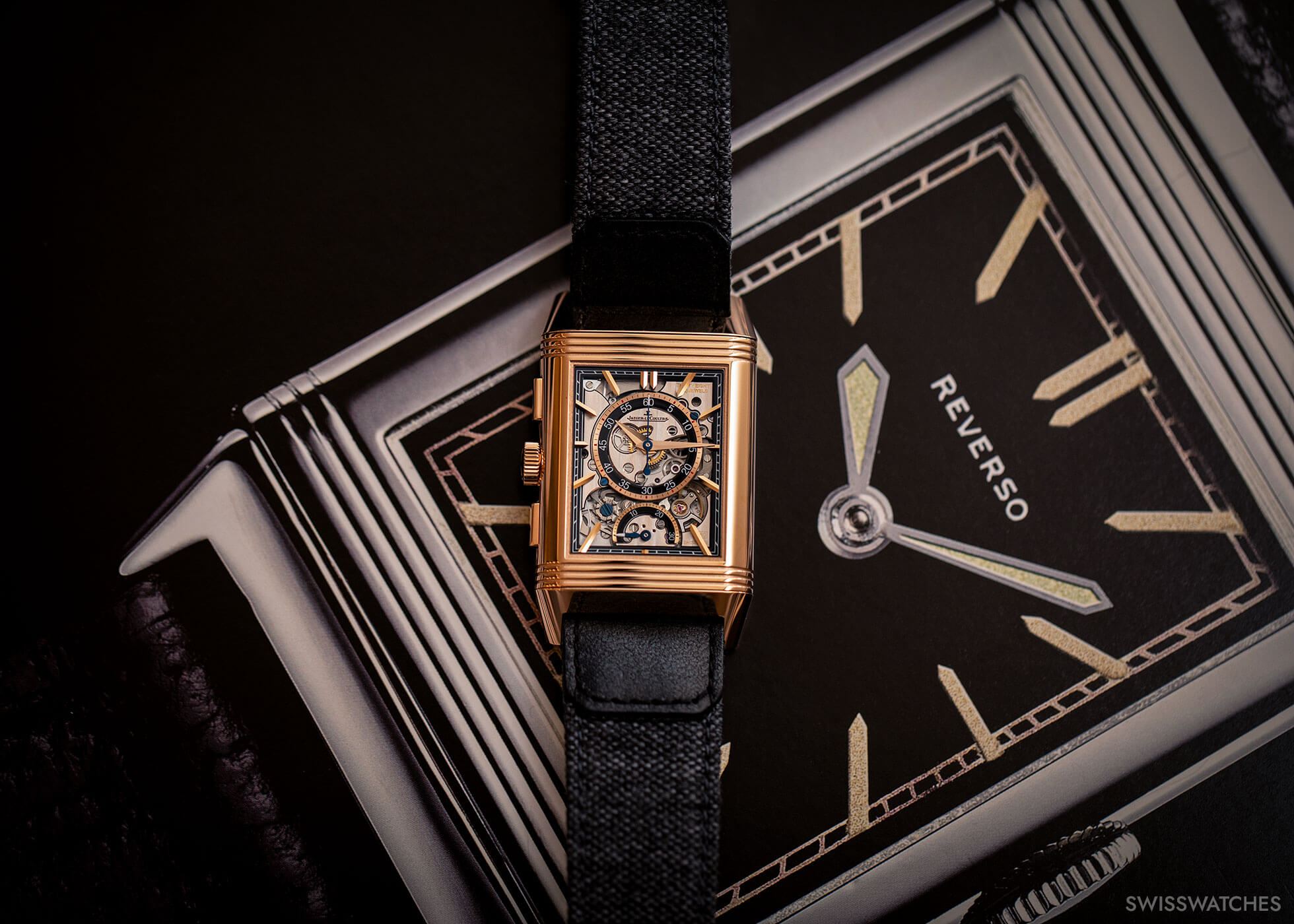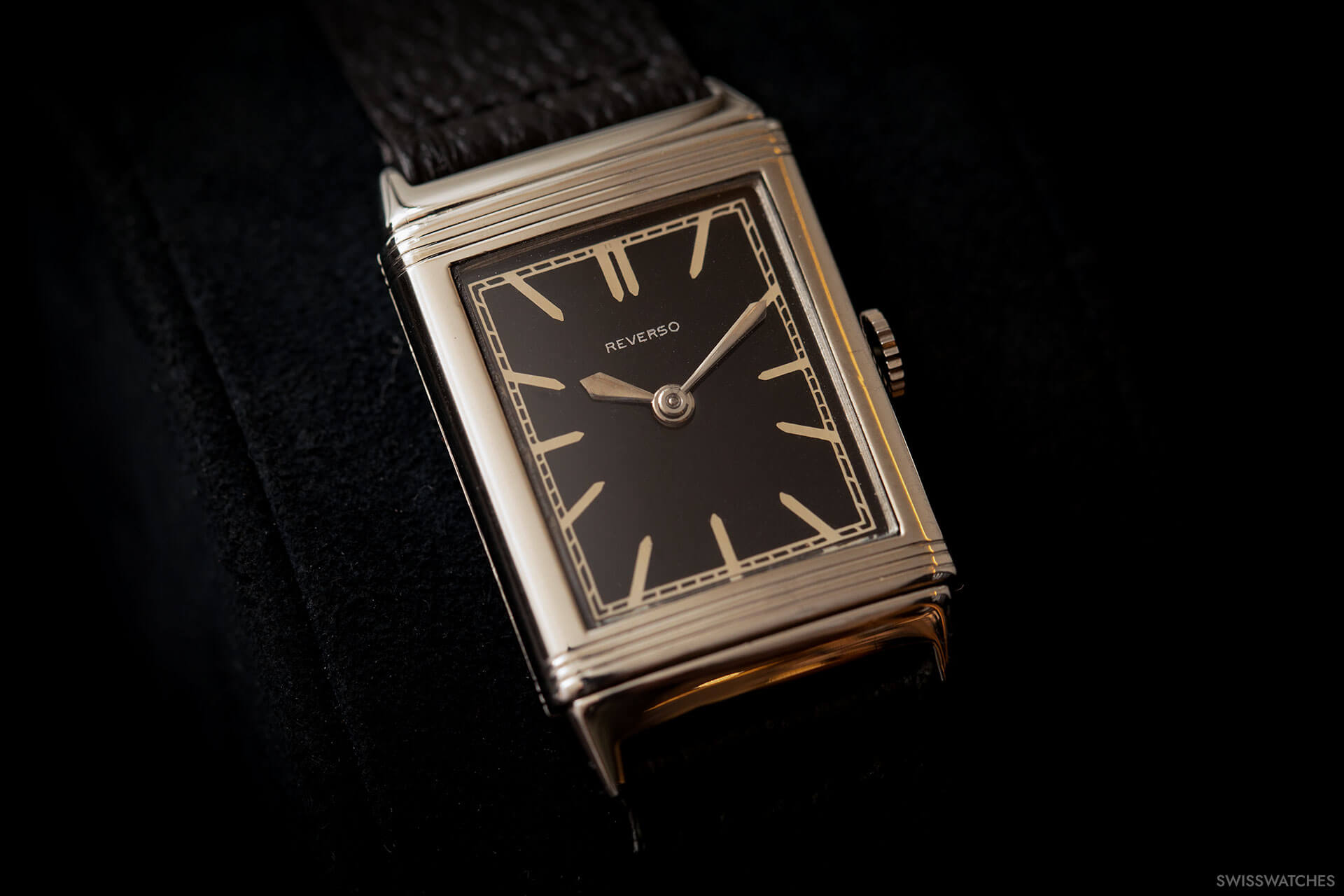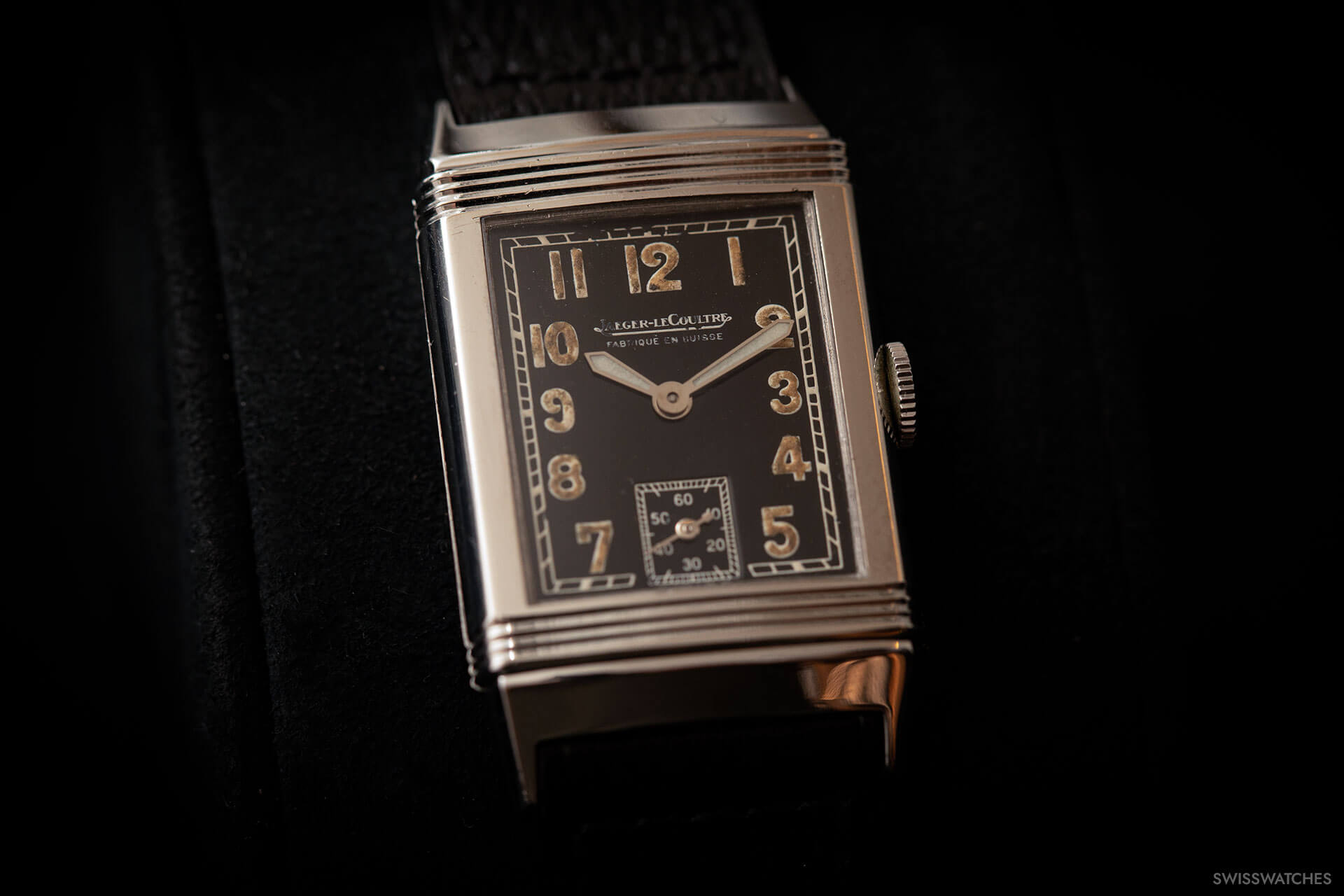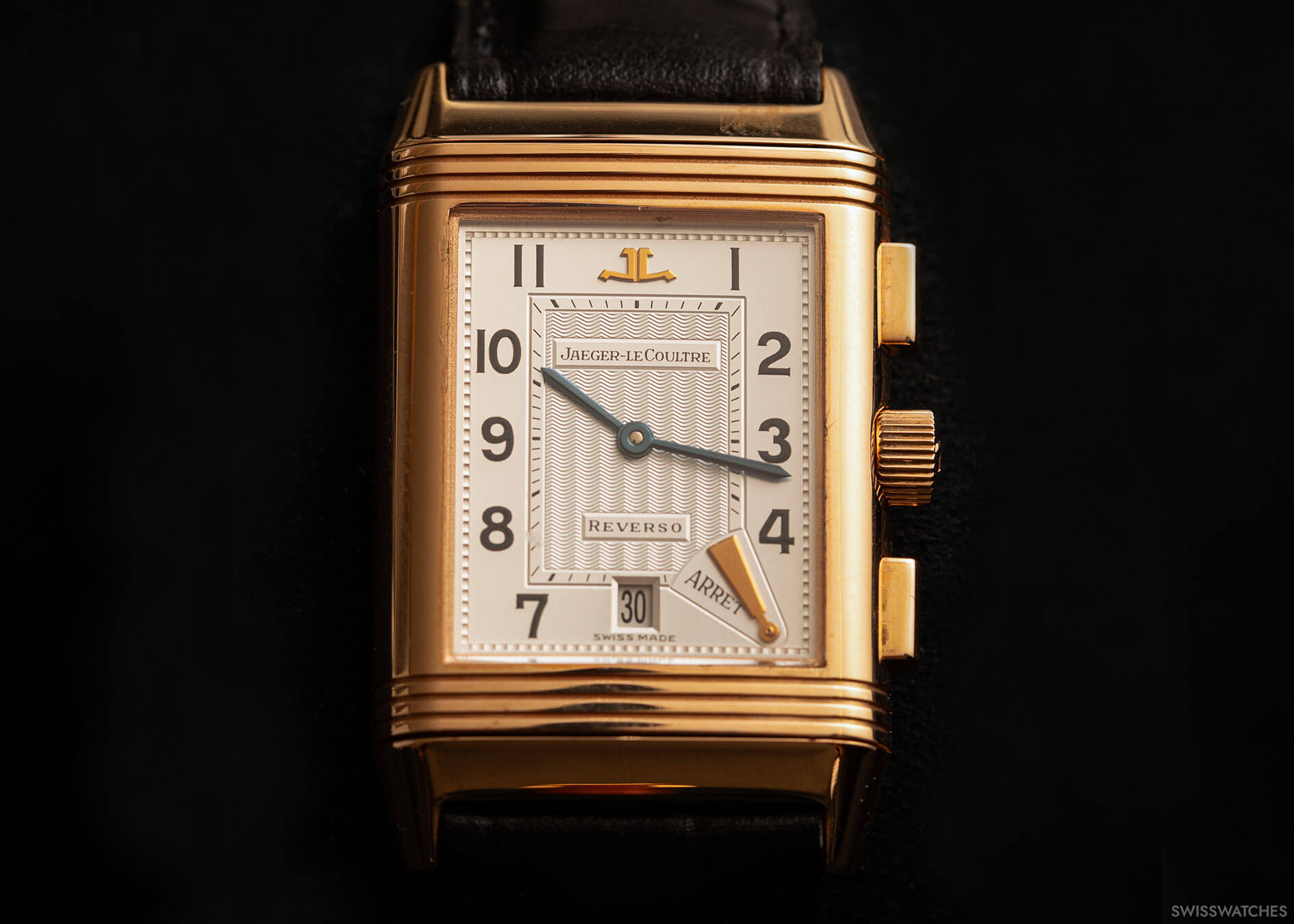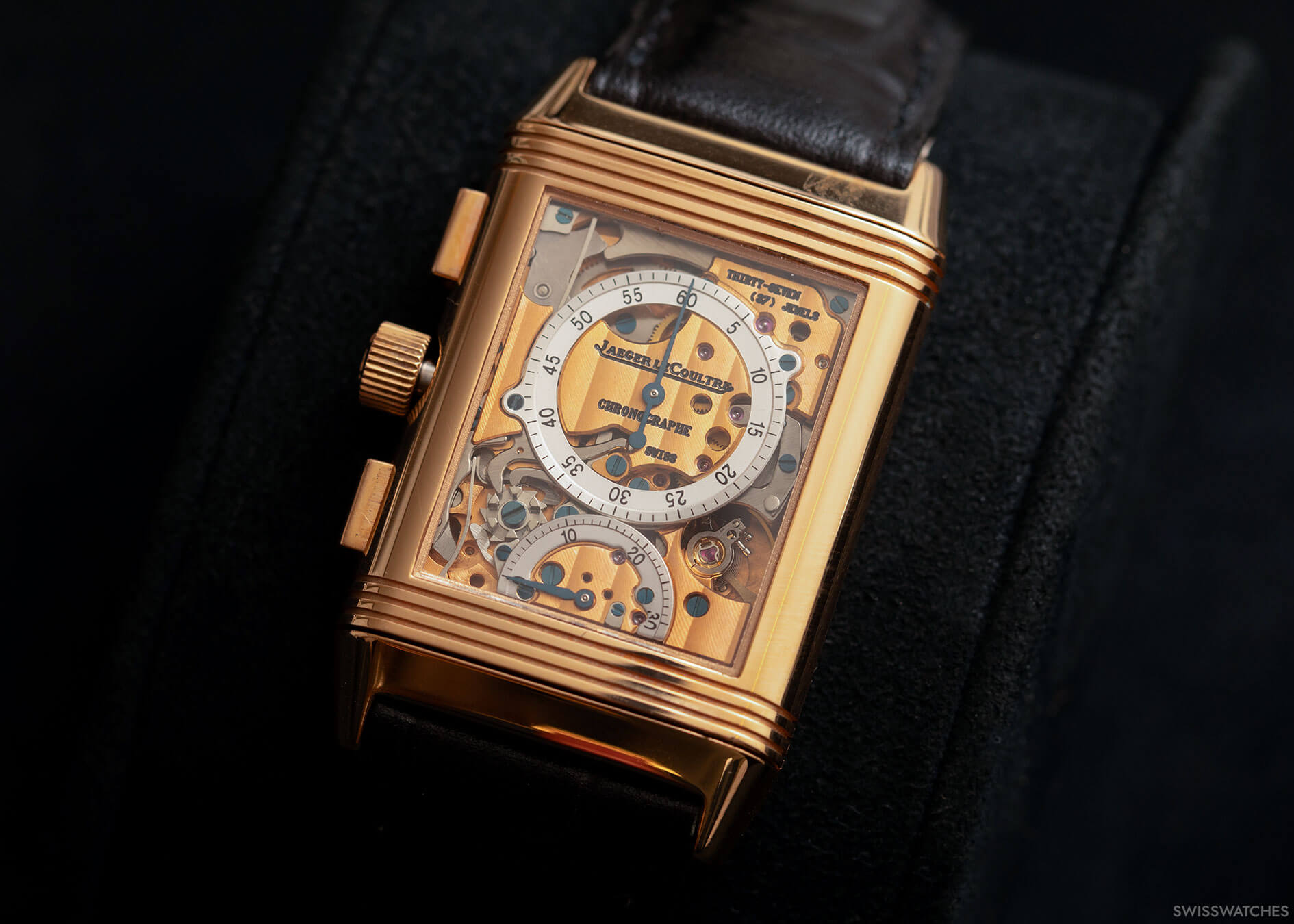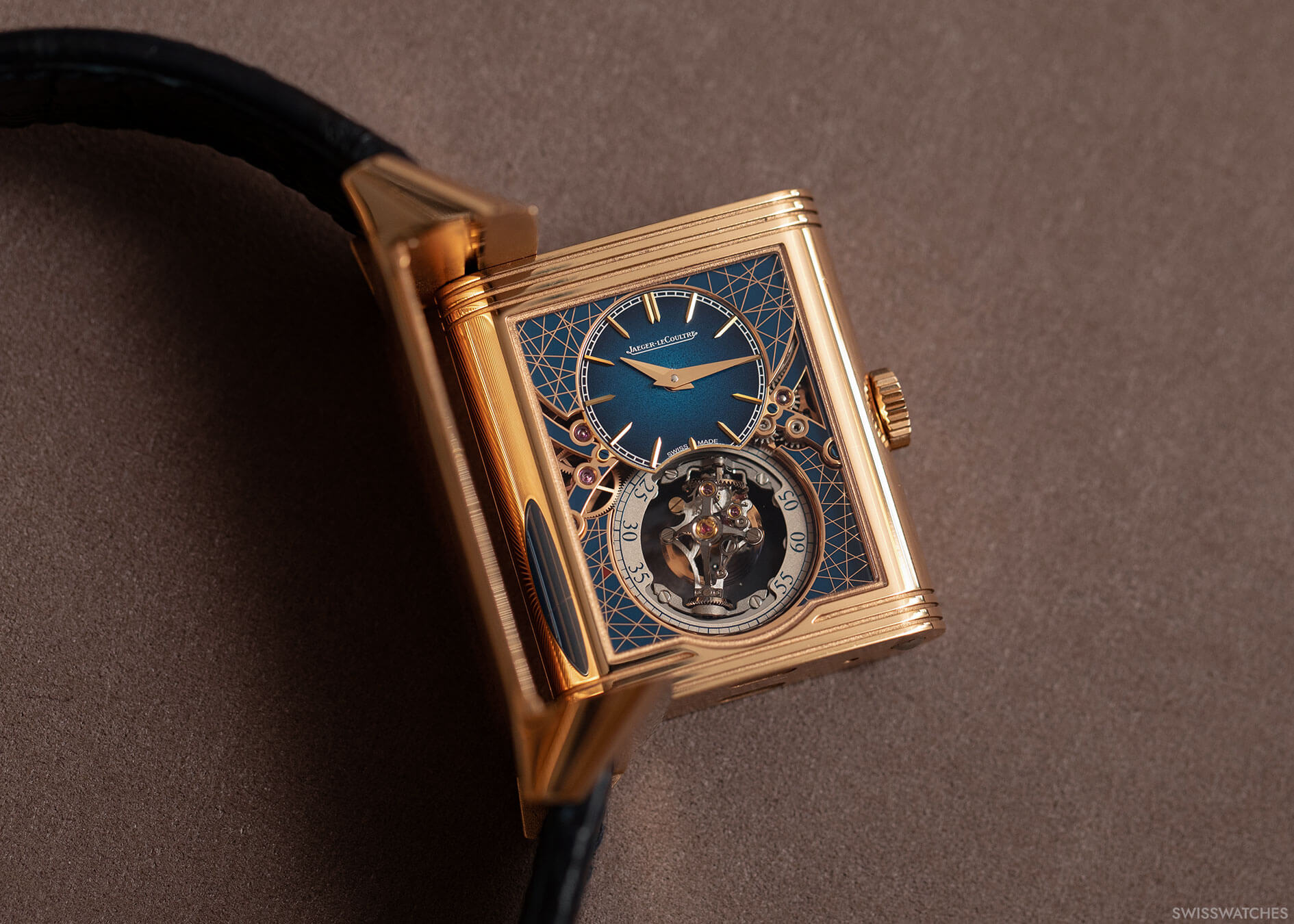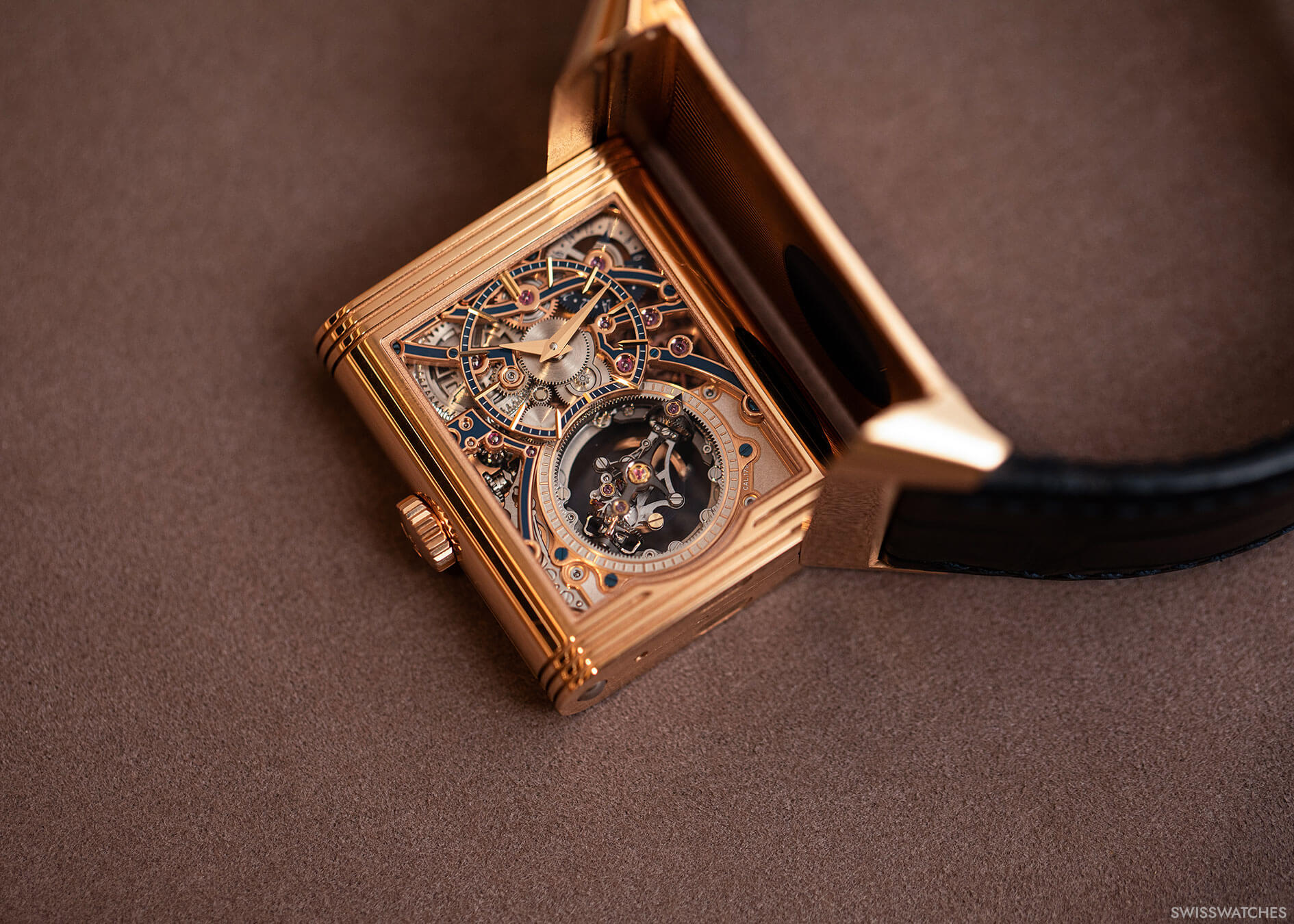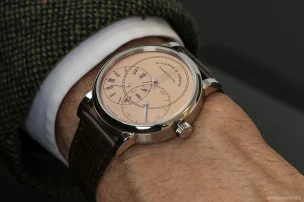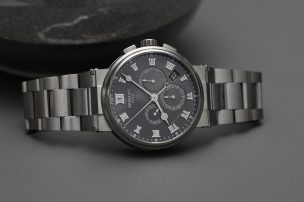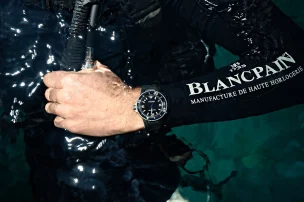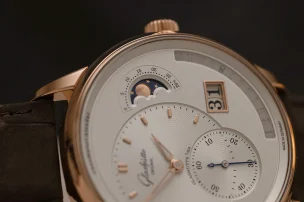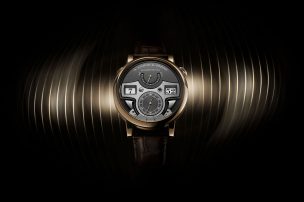
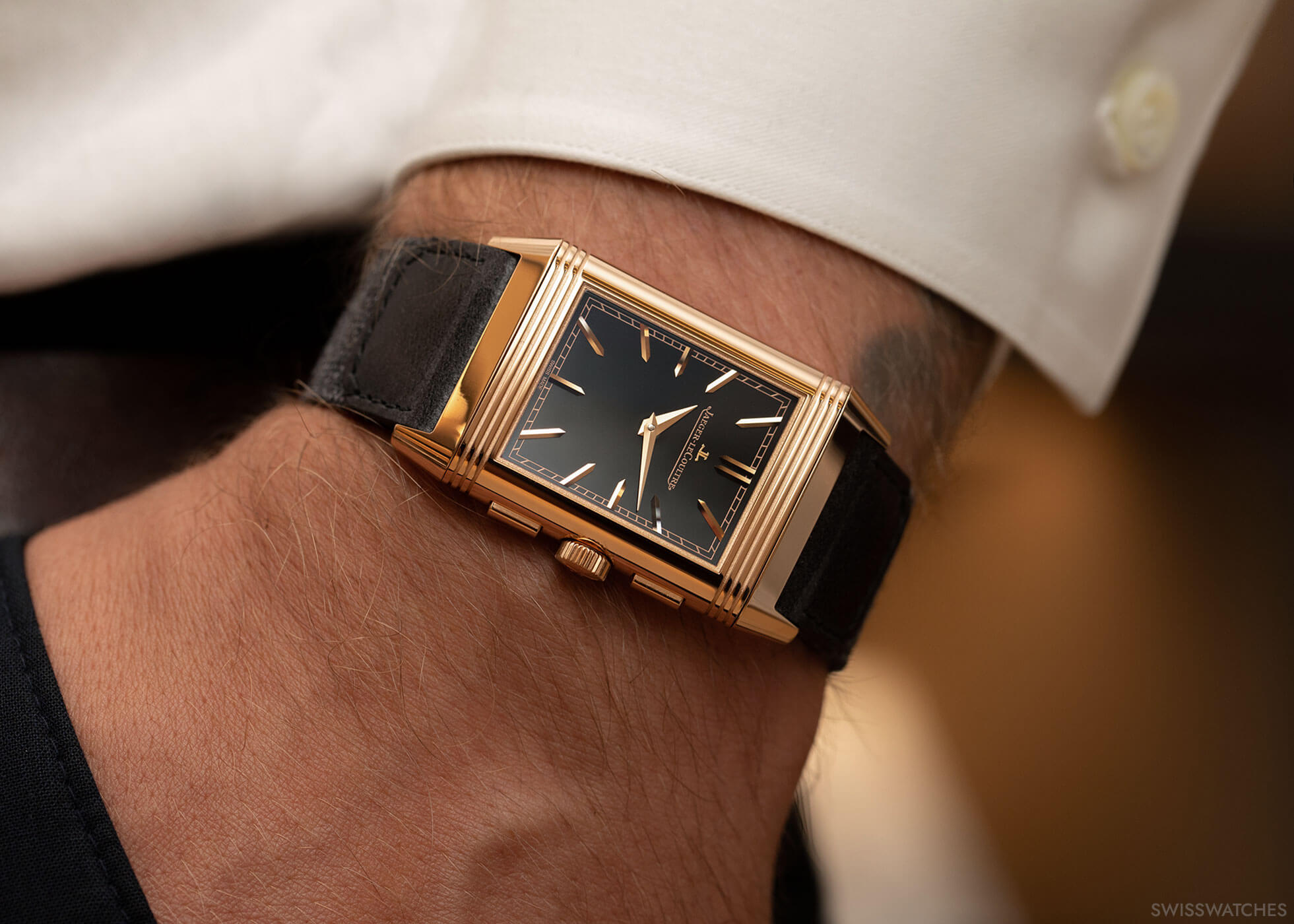
A Horological Wonderland: Jaeger-LeCoultre’s Reverso Travelling Collection Comes to Munich
As any watch enthusiast will know, it is often not just the aesthetic of a watch that enamours us: it’s the story behind it. Cue the Reverso Travelling Collection, which is currently making a stop at Jaeger-LeCoultre’s boutique on the prestigious shopping street Maximilianstrasse in Munich. The story behind the Reverso is a tale well-told, and the watch manufacture is continuing to spread the word behind its most iconic watch through its Reverso Travelling Collection, a campaign that educates the public on the story behind the watch model while sharing an insight into some of the most historically important models to date.
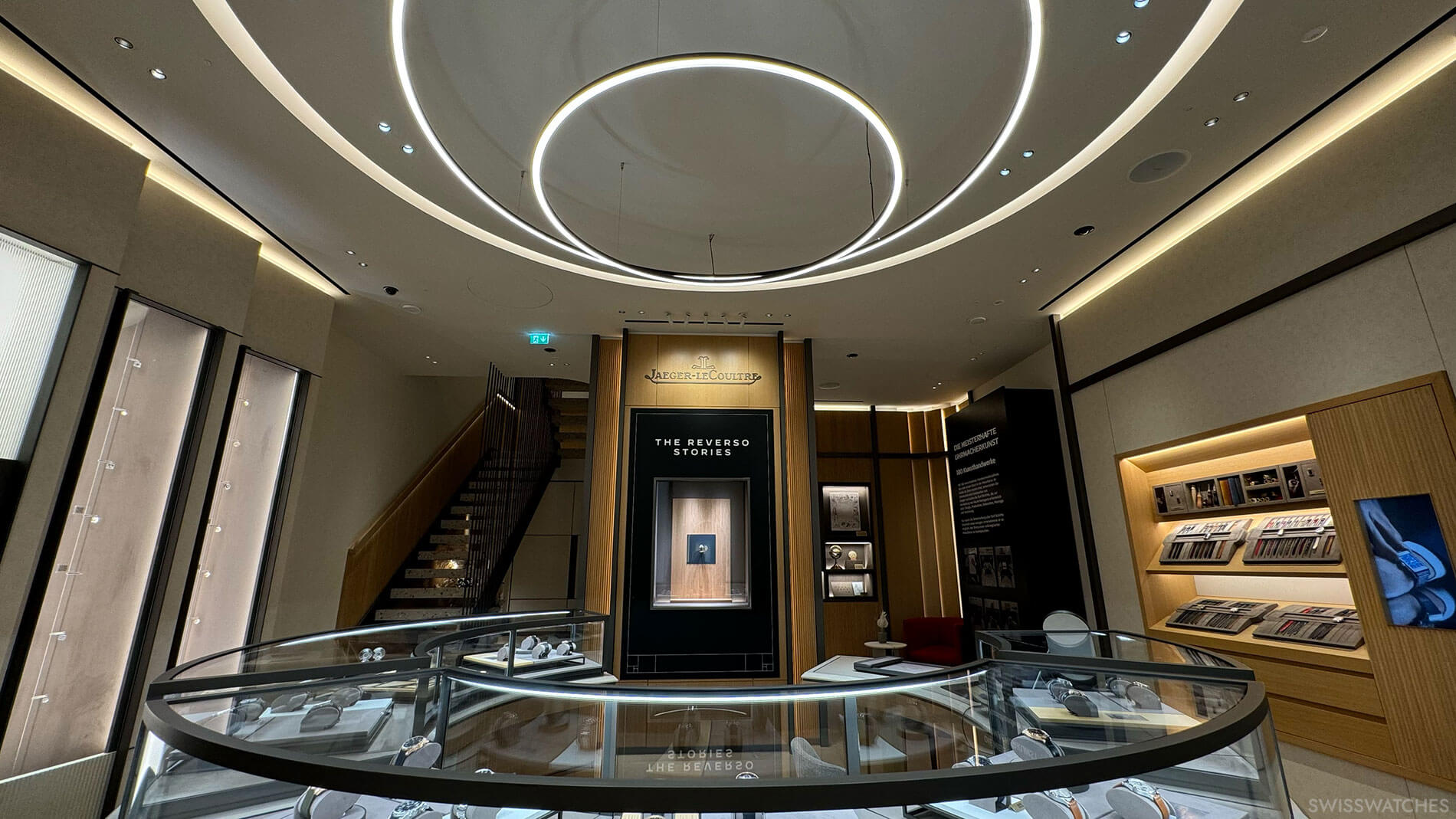
Highlight:
The Reverso Travelling Collection presents the fascinating story of the iconic Reverso watch by Jaeger-LeCoultre.
What to expect:
- Insights into the history of the Reverso watch
- Exhibition of historically significant pieces
Address: 24 Maximilianstraße, 80539 Munich
Opening hours: Monday – Saturday: 10:30 – 18:30
What is the story behind the Reverso?
For those still in the dark when it comes to the conception of the Reverso, allow us to take you on a quick journey. The roots of the Reverso can be traced back to colonial 1930s India. British army officers stationed in the country were fervent polo players, but found that their watches were being damaged while playing the sport. Enter businessman César de Trey, who endeavoured to help create a watch that could be flipped over to protect the dial. He enlisted his friend, the visionary Jacques-David LeCoultre, to produce such a watch with the help of designer René Chauvot. Incredibly, less than nine months after the patent application for the Reverso case had been made, the first models hit the market.
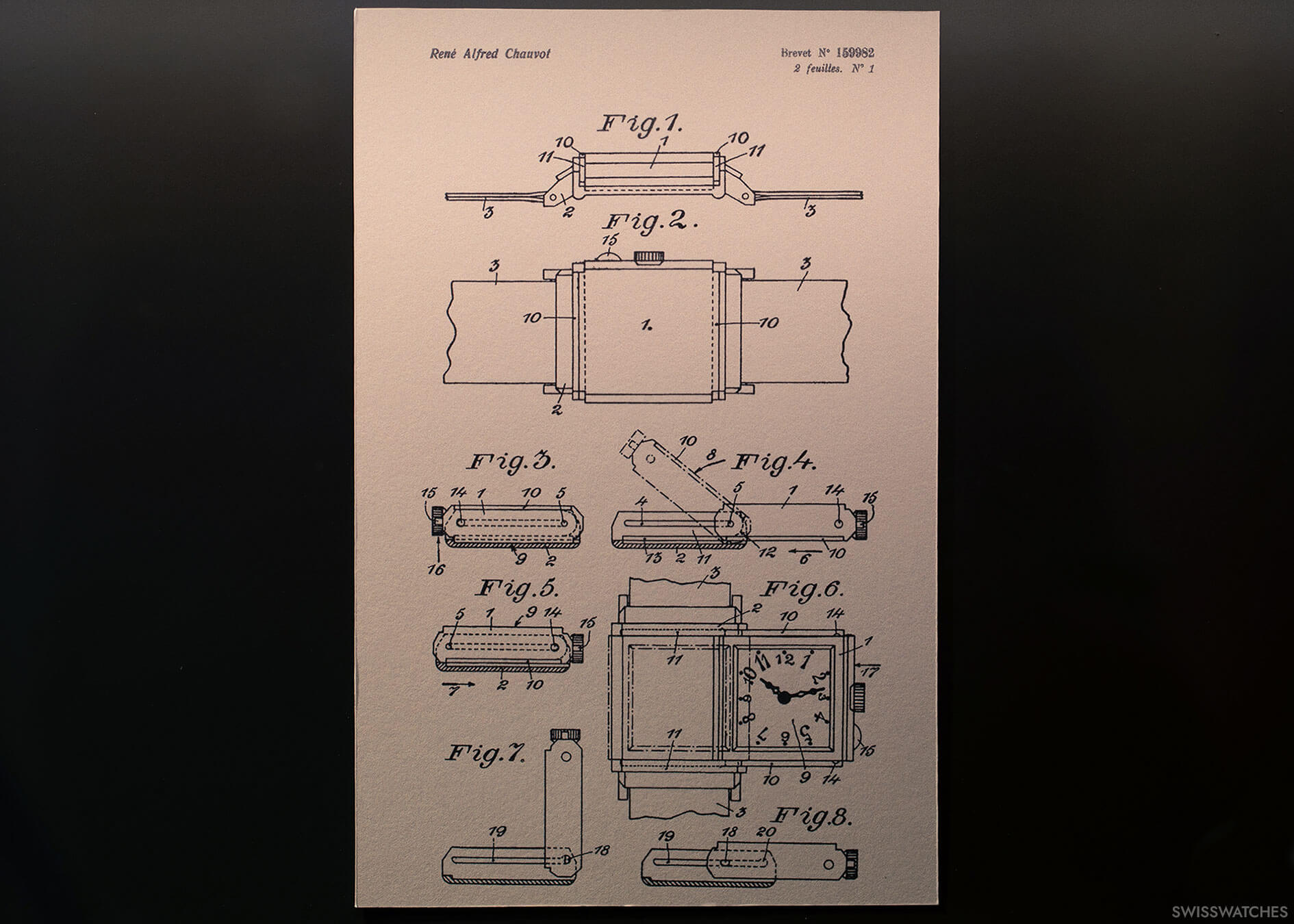
Style and design
The Reverso showed no signs of slowing down, with the model quickly being adapted to suit both male and female wrists. Various interpretations soon sprung up, from pendants and handbag clips to colourful lacquered dials. Upholding the principles of Art Deco design, the watch’s design blueprint, however, stayed constant, featuring – as endures to this day – signature gadroons and triangular lugs.
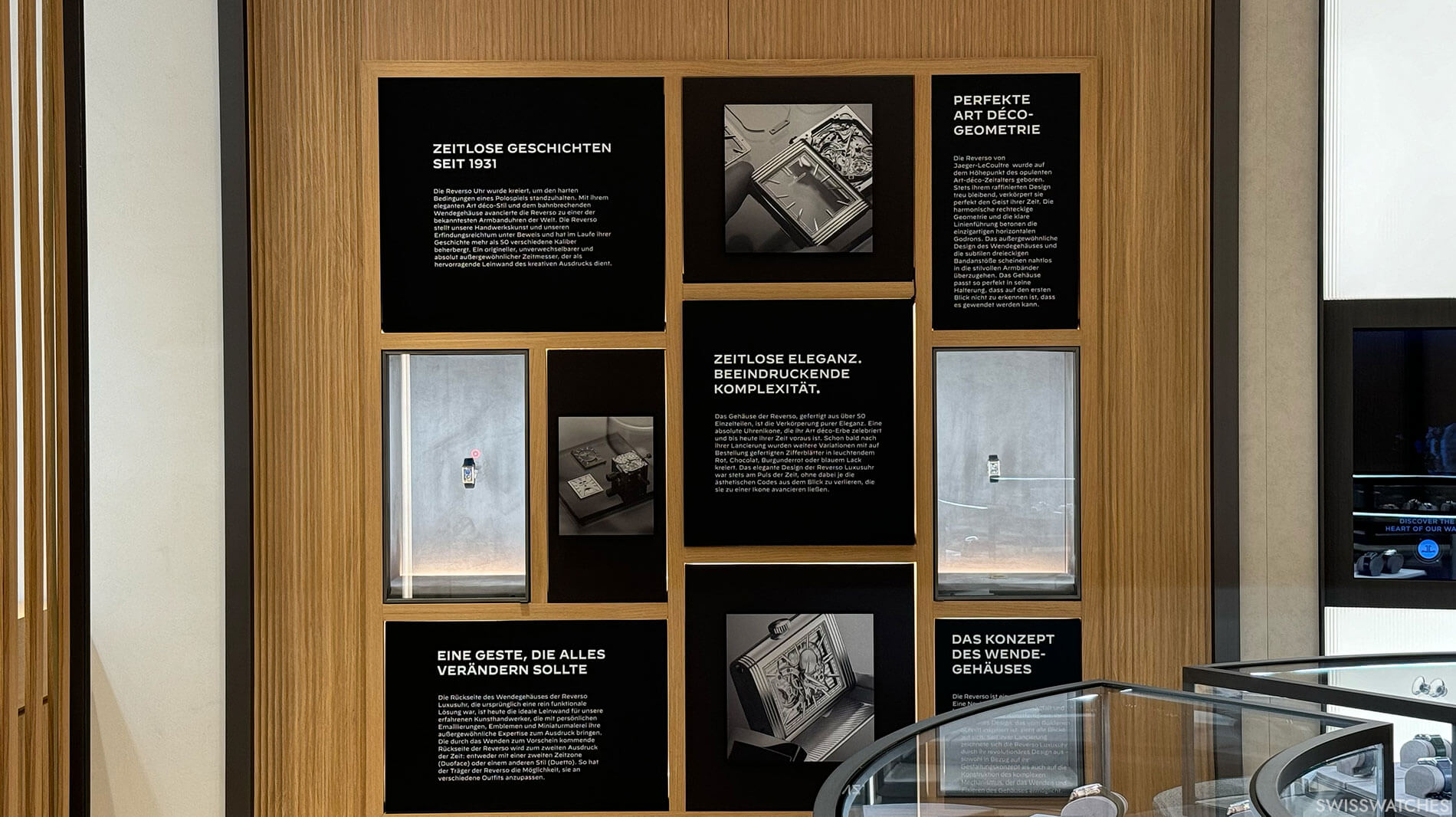
Thanks to Jaeger-LeCoultre’s Reverso Travelling Collection, visitors to the boutique can get a taste of this unrivalled style for themselves. Models on display include the likes of the original Reverso from 1931 in all its glory, which housed the calibre 064, or an early model integrating a square small seconds.
A glimpse into these original models reveals just how much the model has, in some ways, evolved – take for example the modern-day elongated cases – while in other ways, today’s timepieces remain remarkably similar to the very first pieces introduced by Jaeger-LeCoultre.
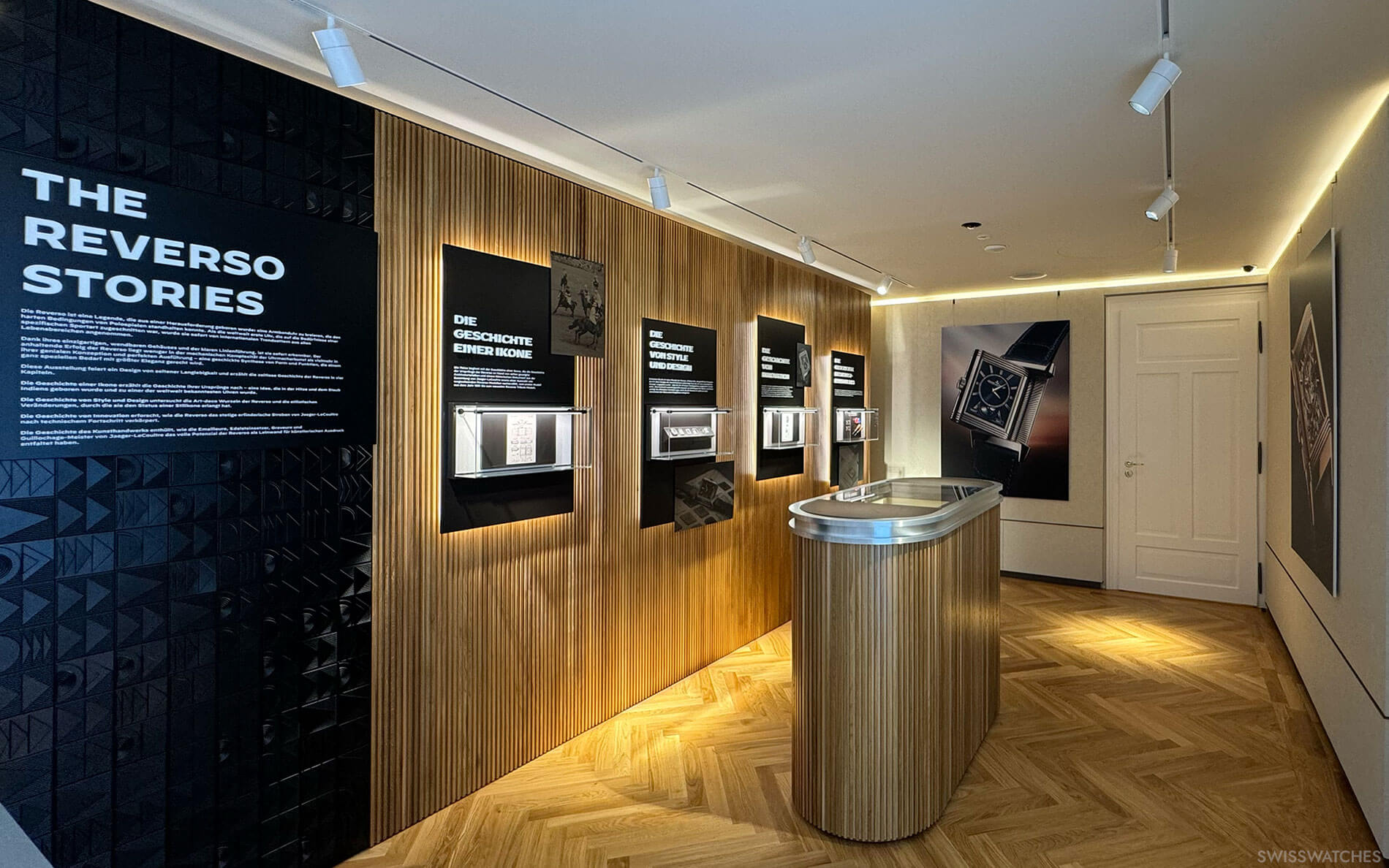
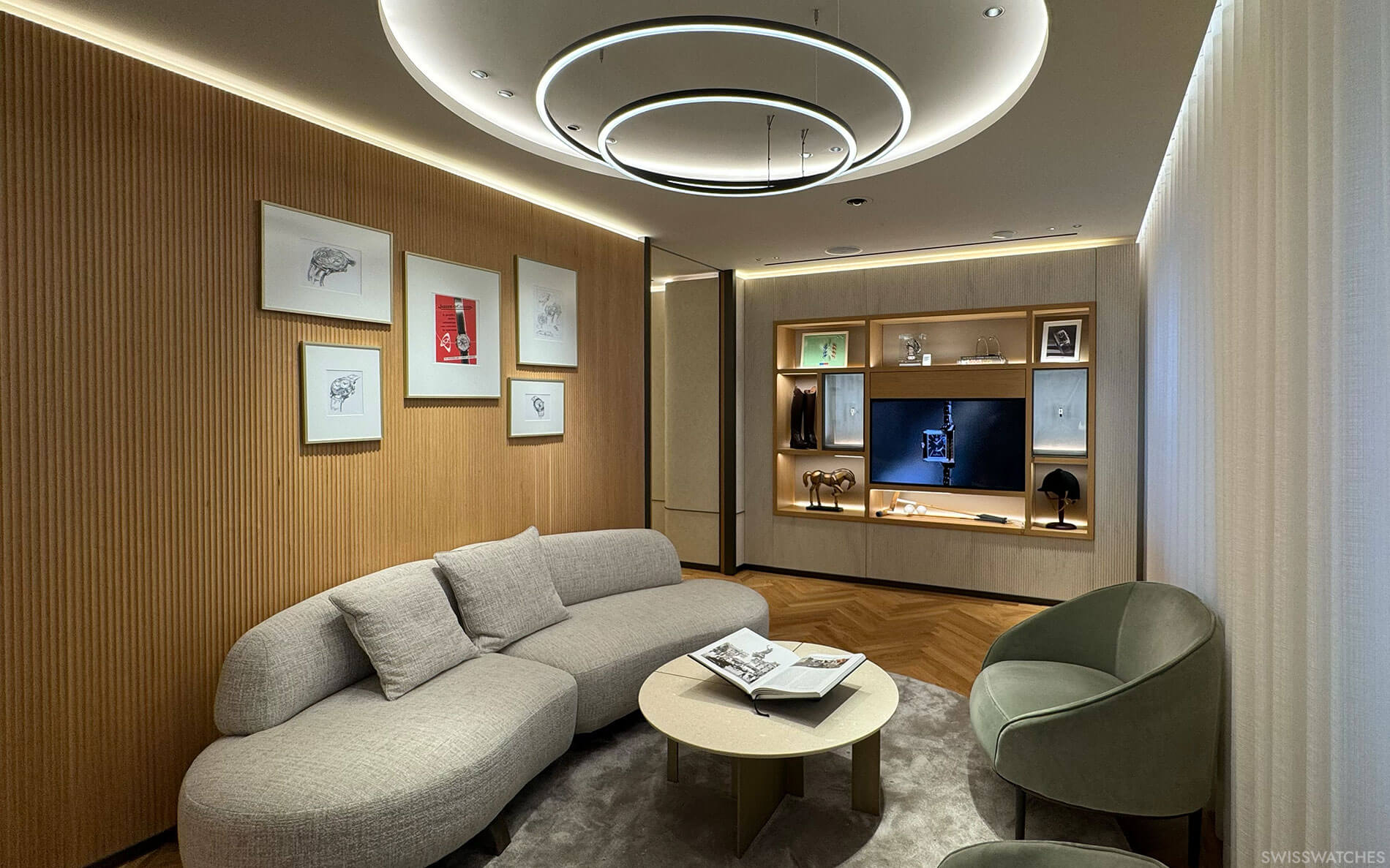
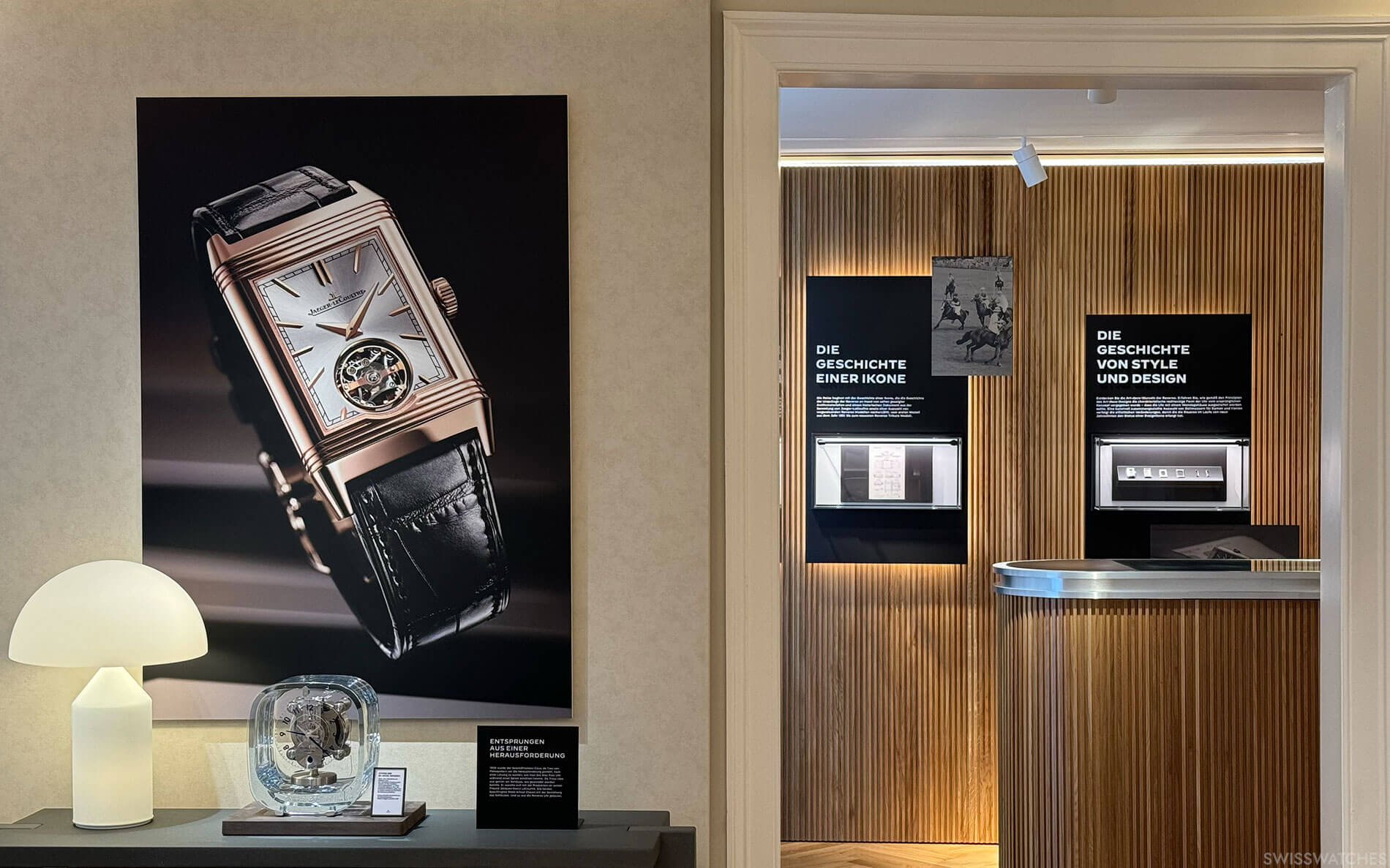
The Reverso: Ever the innovator
Naturally, the very invention of the Reverso’s construction was innovative in its own right. Yet, since its inception, it has transcended its own initial engineering feats thanks to the horology house’s never-ending pursuing of technological advancement.
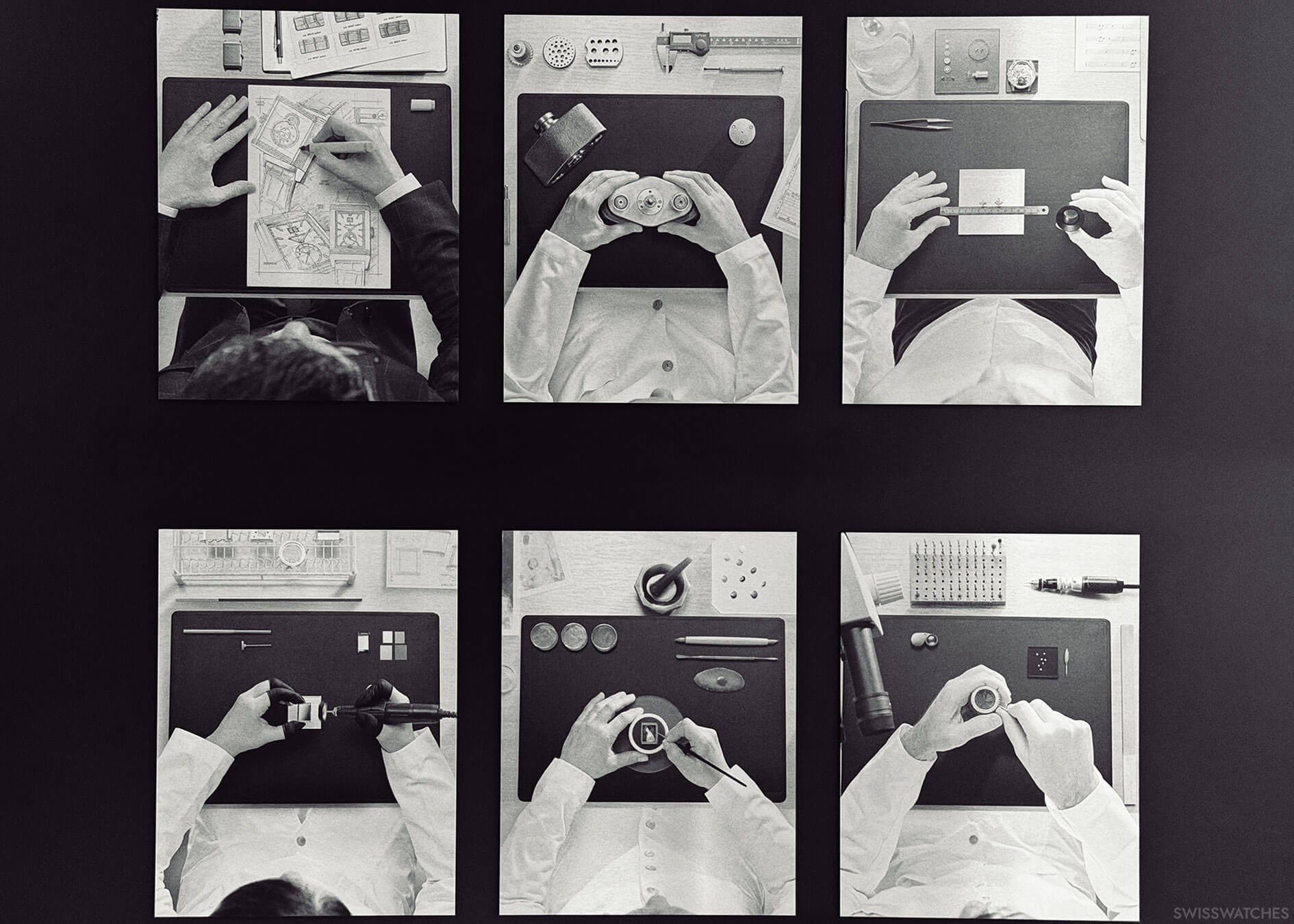
Amongst other horological wonders, one particular highlight comprising the Jaeger-LeCoultre Reverso Travelling Collection is the brand’s first tourbillon movement for a wristwatch, in the form of the calibre 828. This phenomenal milestone of a timepiece from 1993 offers small seconds and a power reserve indication, alongside what is surely some of the most beautiful decoration to ever be seen on a Reverso model. The tourbillon rotates once per minute, with the small seconds hand mounted onto the axis of the tourbillon cage.
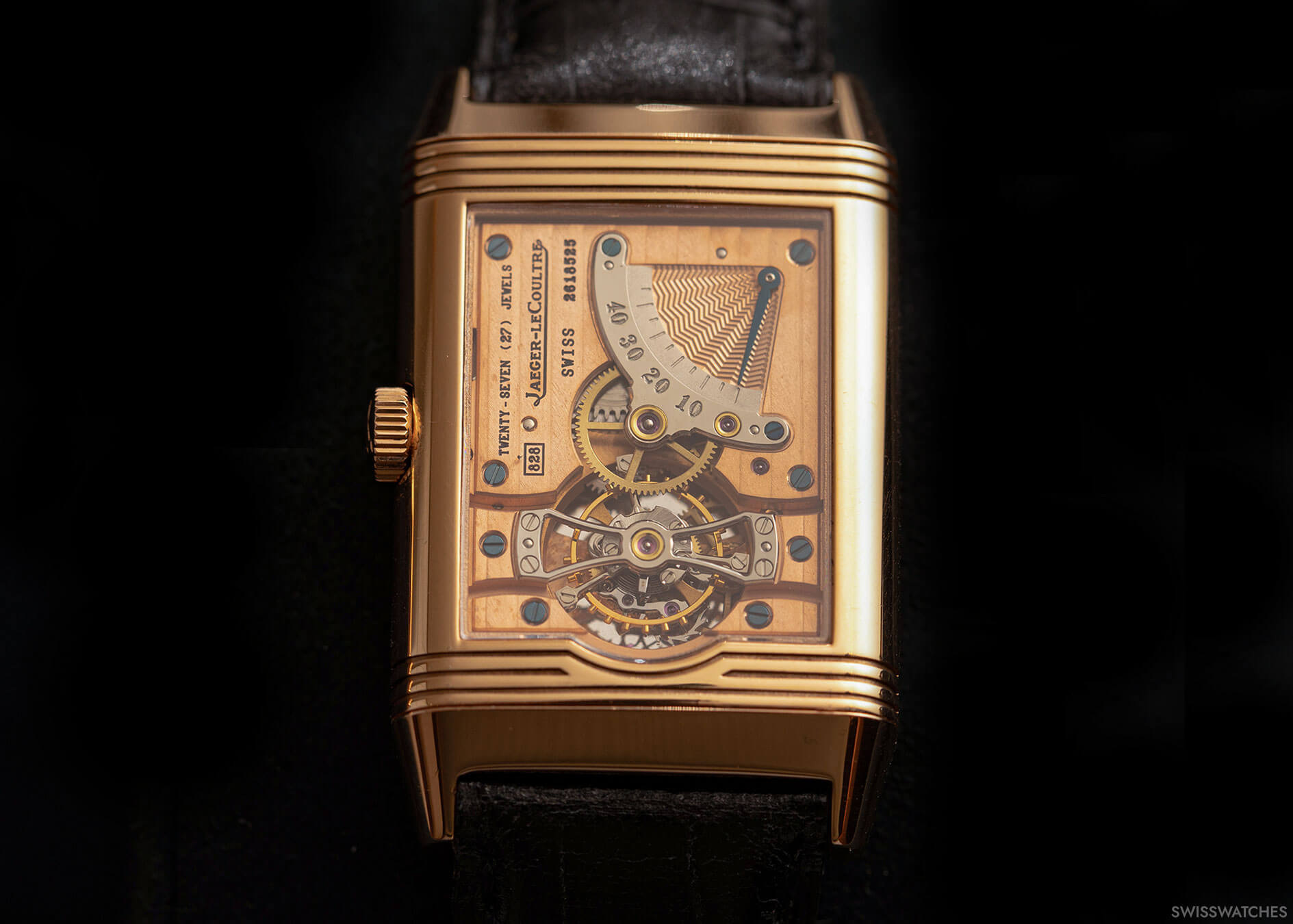
Alternatively, guests can also take a look at Reverso Chronograph Rétrograde from 1997. It houses the calibre 829, which enables the timepiece to display (on its reverse side) the chronograph seconds on an unusual circular bridge, while a semi-circular retrograde scale shows the chronograph minutes from 0 to 30. The front side of the watch has a more traditional hour minute face, with the addition of an indicator to show when the chronograph is activated.
Meanwhile, those with an interest in astrology might well want to admire the Reverso Quantieme Perpetual from the year 2000. Featuring a stunning retrograde date indication, it simultaneously displays the days, months, and phases of the Moon. The other side of this exceptionally complicated timepiece features indicators for day-night as well as leap years. The watch is living proof of the brand’s expertise in the field of micro-mechanics alongside traditional craftsmanship.
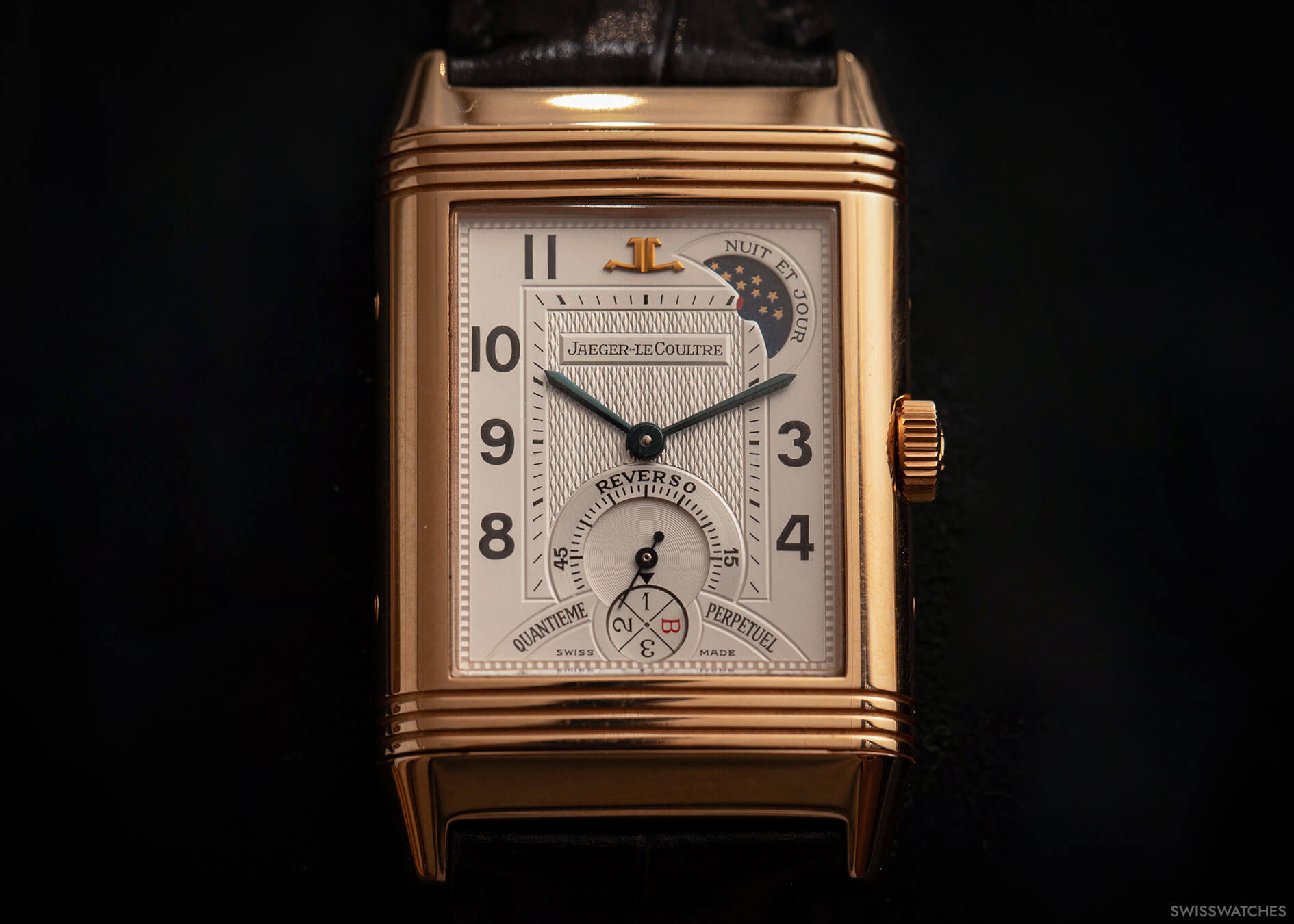
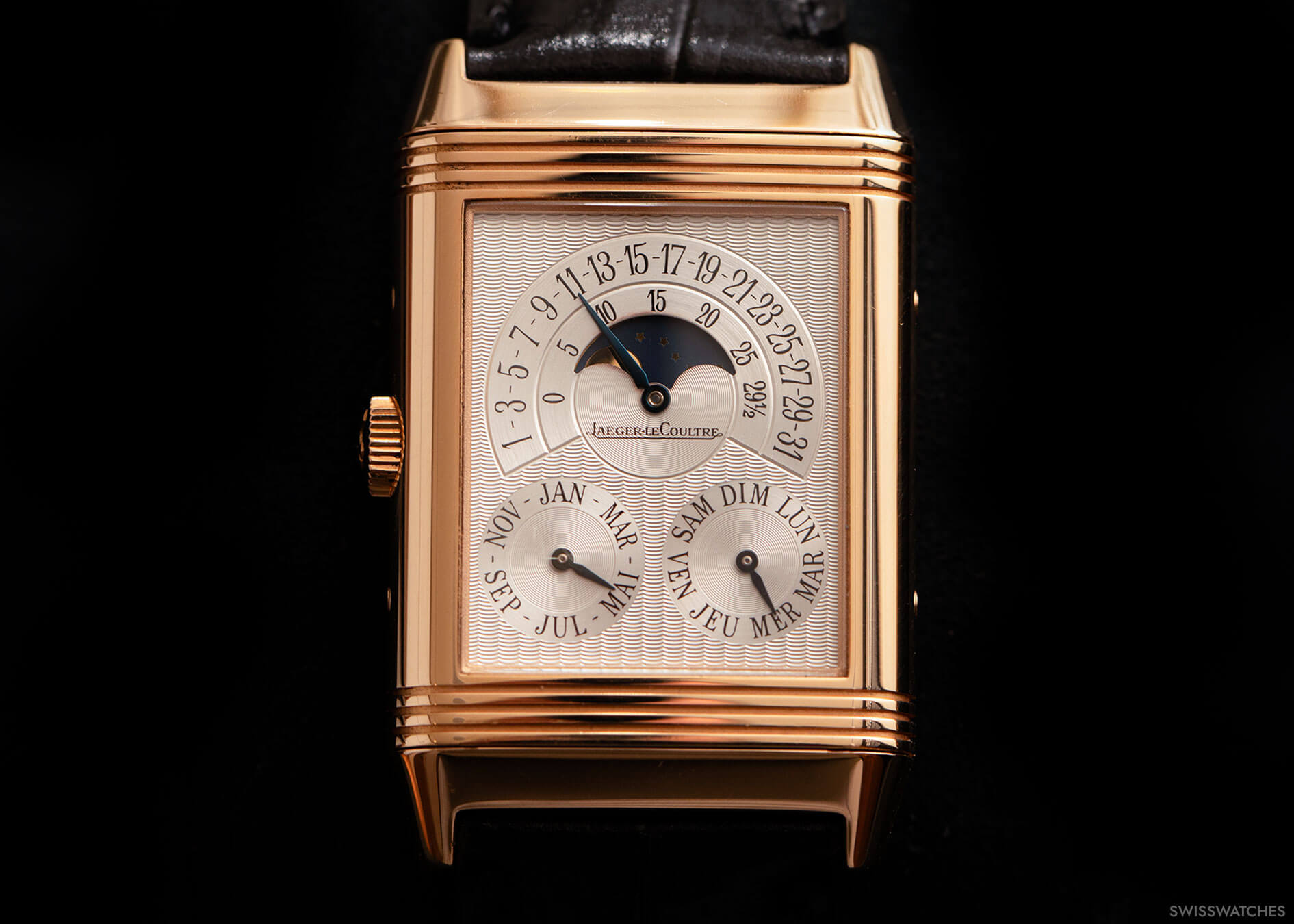
Masters in the art of enamel
Speaking of which: craftsmanship is highly coveted at the Jaeger-LeCoultre manufacture, as numerous models across the decades have proved. For some years now, the Reverso’s blank steel side has created a canvas upon which the manufacture’s in-house artisans can bring, amongst other things, miniature enamel paintings and meaningful engravings to life.
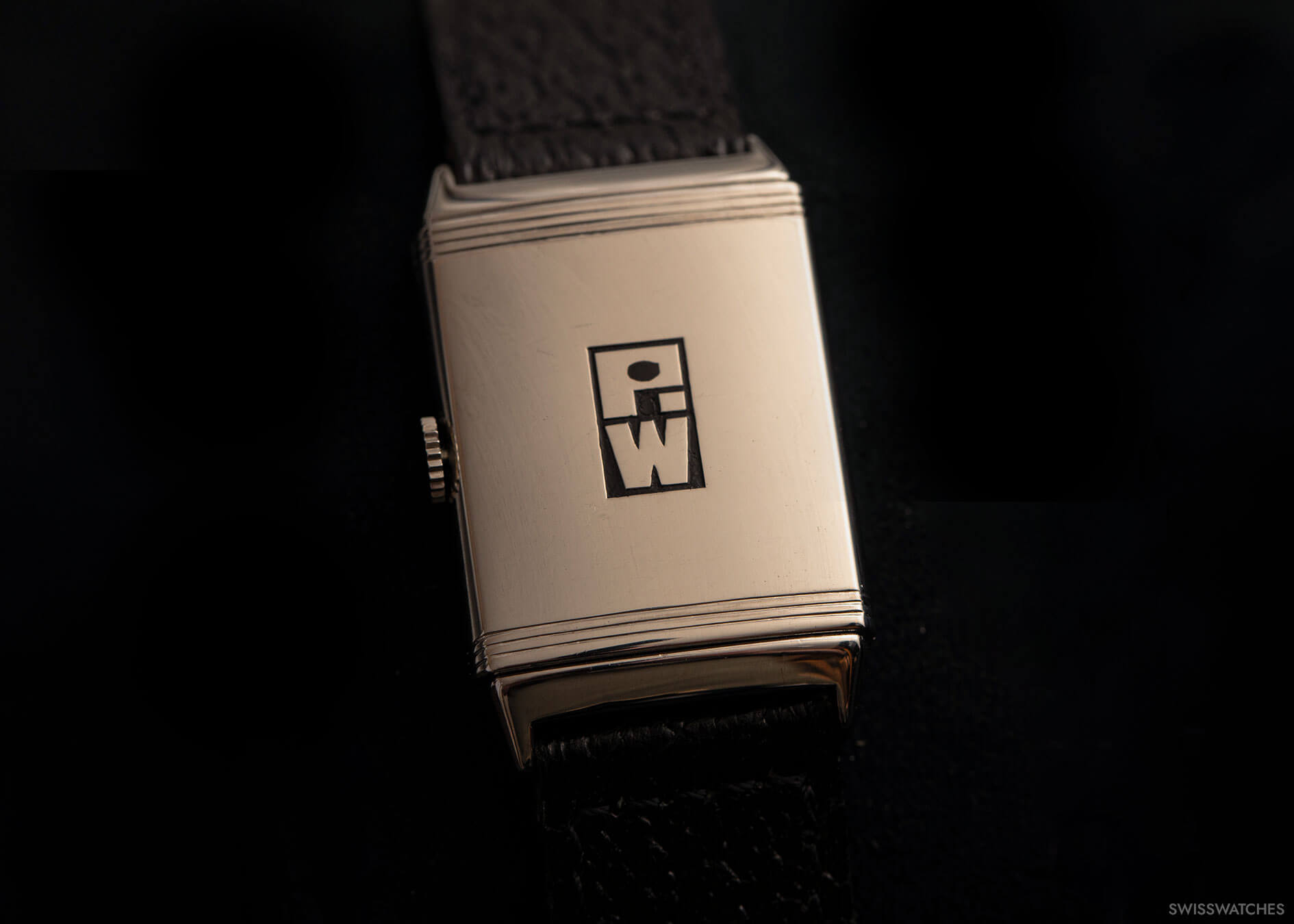
One particular highlight here is the Grande Reverso Zodiac Sign – Email Lion, an incredible, virtually never-seen timepiece. Back in 2004, Jaeger-LeCoultre created an exclusive collection of 12 pieces, each of which was decorated with a Zodiac in enamel. Housed in a heavy Extra Grande Taille case in 18-carat gold, the Art Nouveau watch’s movement, the calibre 875, also packs a punch with its eight-day power reserve.
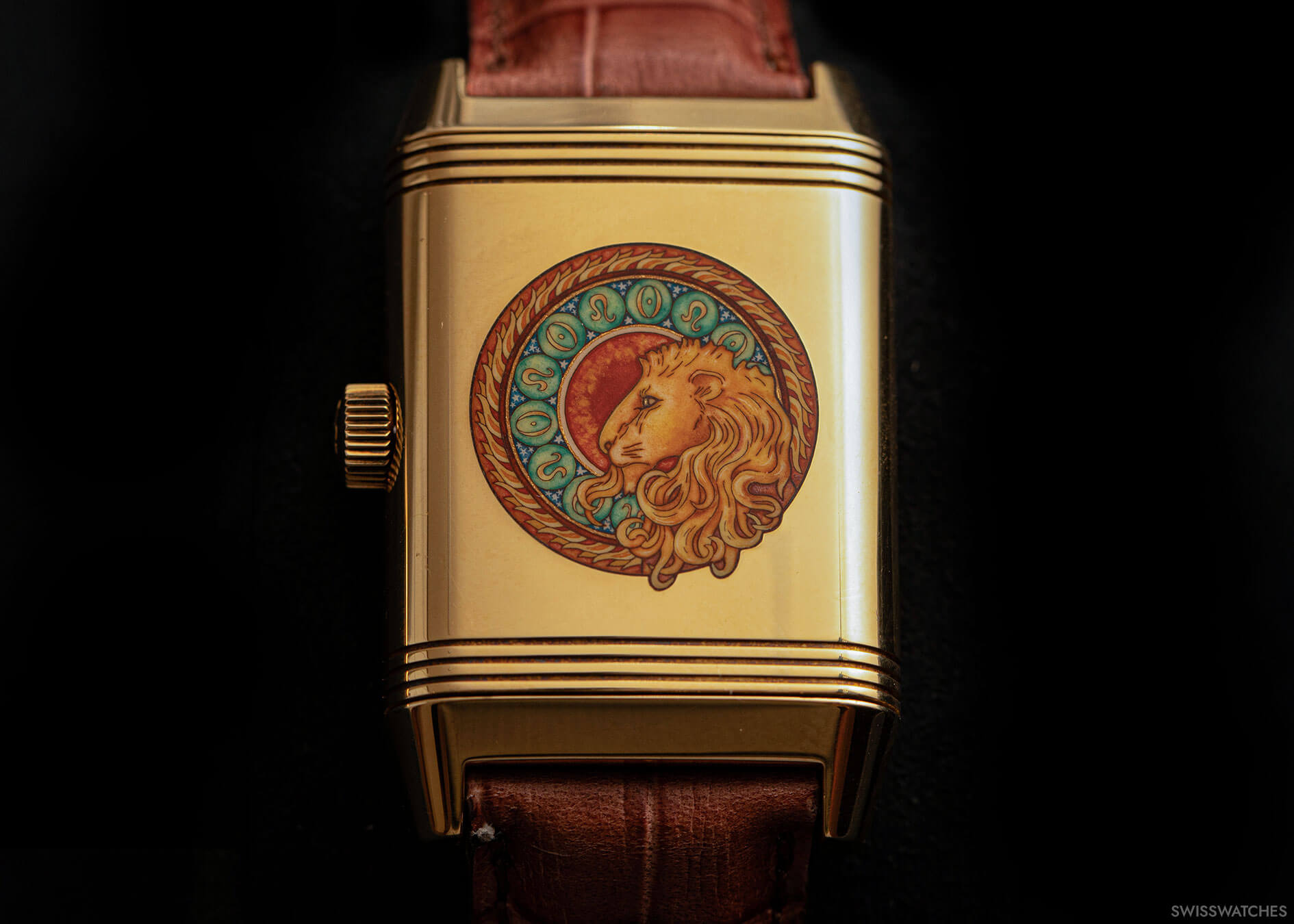
Turning the timepiece over to the dial reveals an exquisite white grand feu enamel, upon which the dial is subtly accented with a blue railway minute track matching to the traditional blued steel hands. Both the power reserve between 10 and 11 o’clock, as well as the seconds subdial diagonally across from it, are slightly recessed – another rarity.
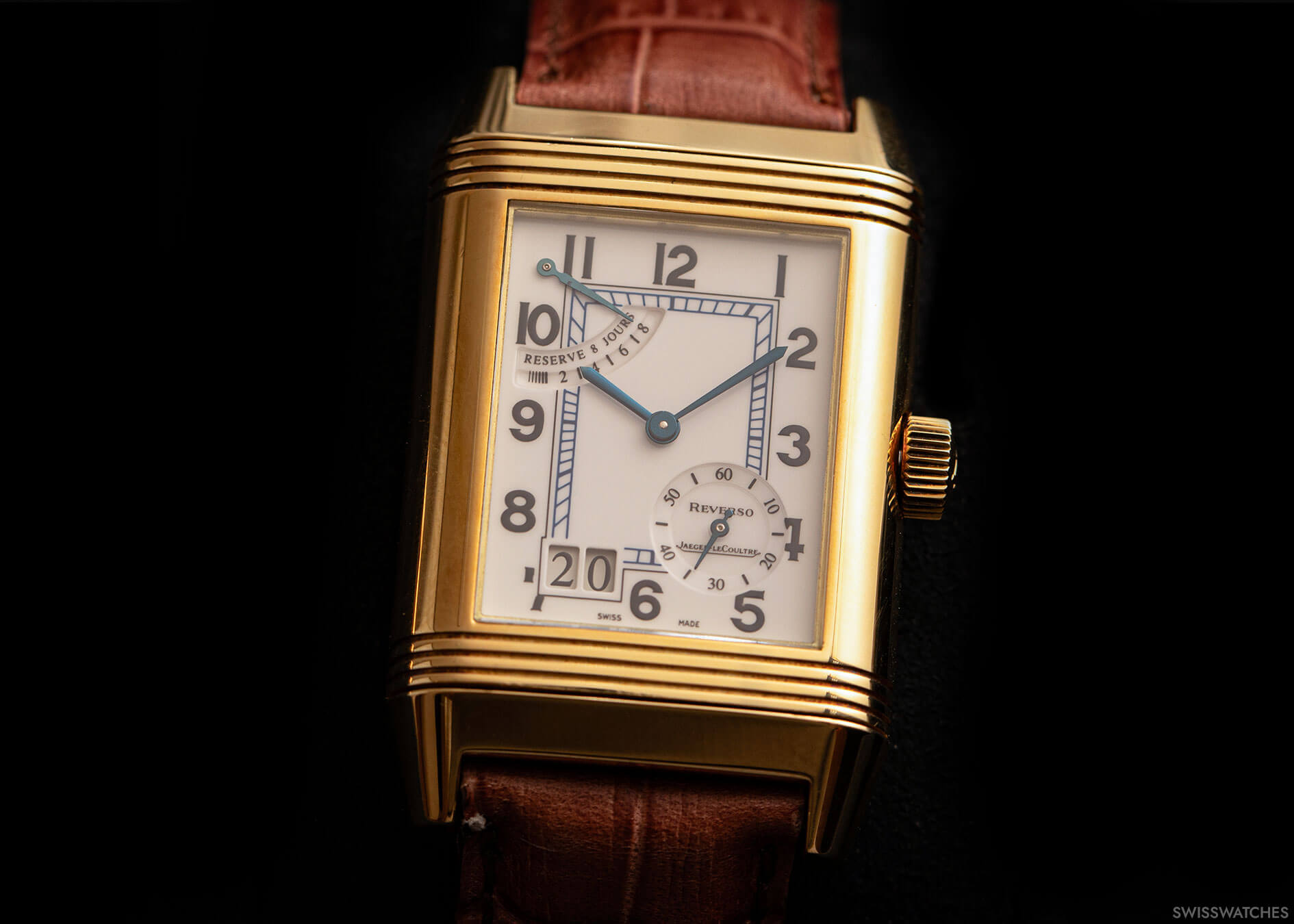
Meanwhile, other Reversos on show display the quiet beauty created through the brand’s gem-setting expertise and intricate decoration – particularly impressive is a baguette-cut small ladies’ Reverso, with the precious stones curving across the gadroons and angular sides of the case.
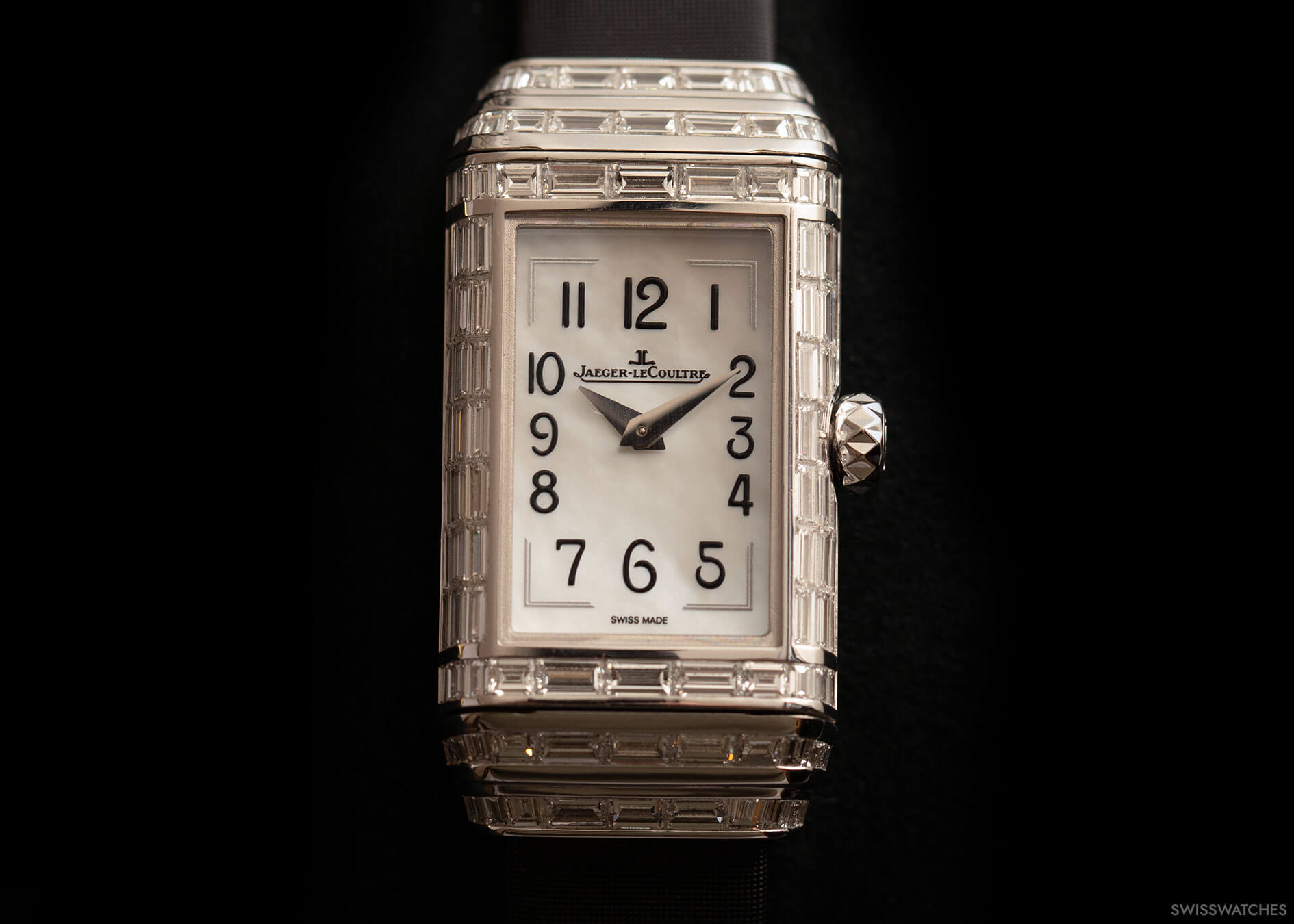
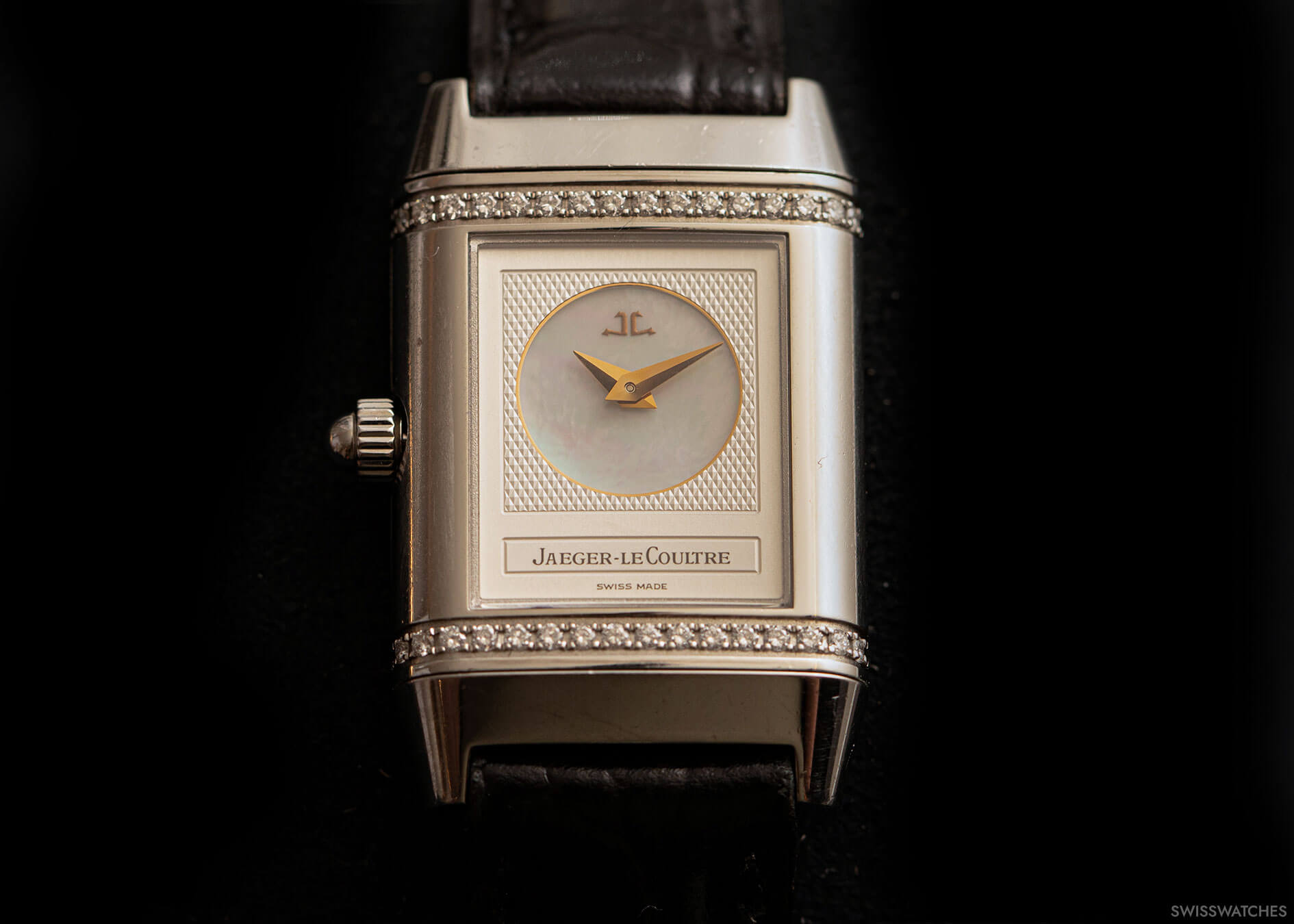
Into the present, heading for the future
Other innovations, however, seem almost ahead of the times. Take the Reverso Hybris Artistica Calibre 179 with its stunning blue dial, housing the brand’s gyrotourbillon, aka Jaeger-LeCoultre’s signature multi-axis tourbillon.
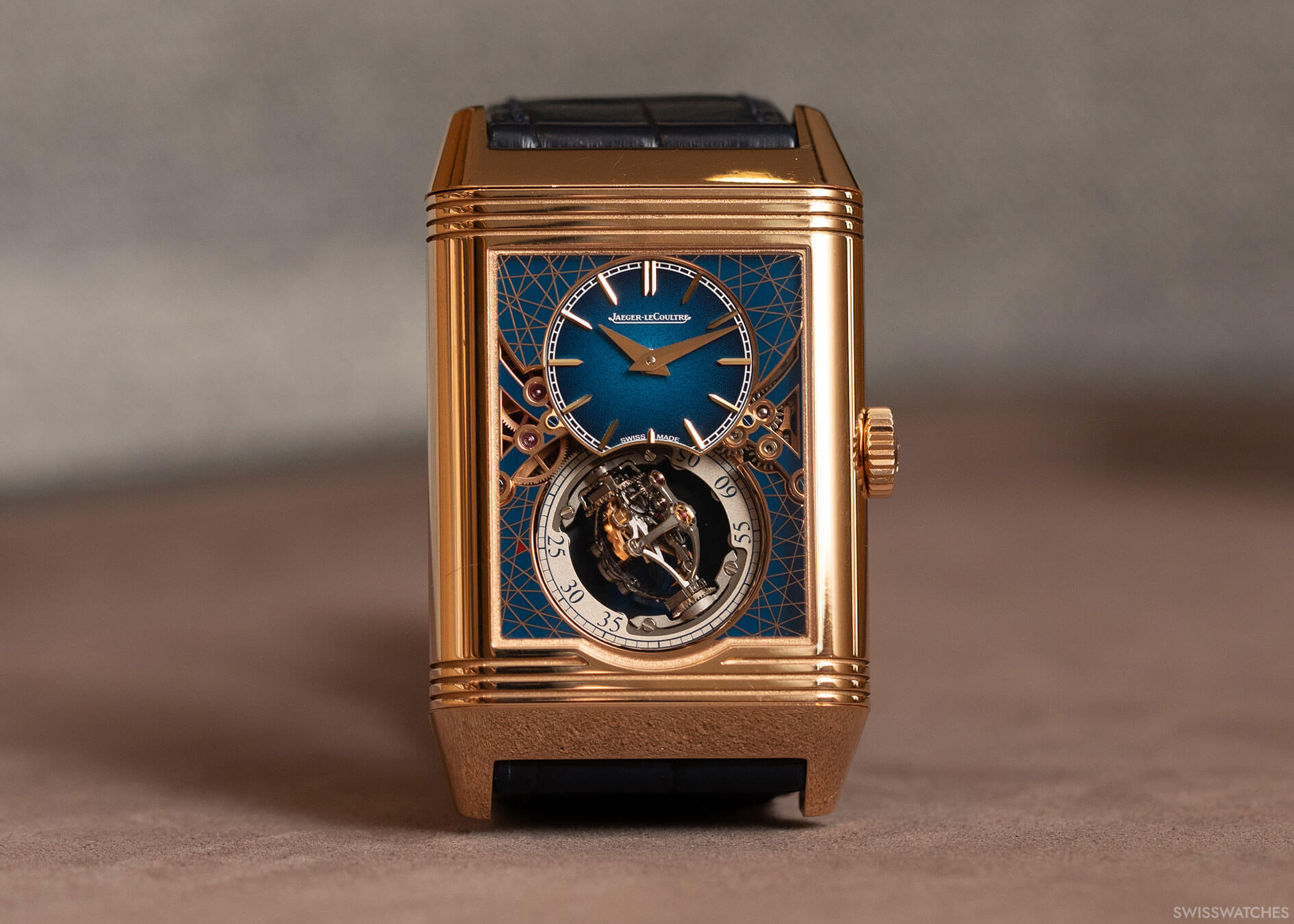
Observers of the timepiece can admire this incredible innovation in action, which features a mesmerising hemispherical balance spring that expands and contracts like a beating heart while improving the watch’s efficiency. Working quickly, the inner tourbillon cage rotates 360 degrees every 16 seconds and the peripheral movement makes a full rotation once per minute.
Thanks to a ring of ball bearings, the flying Gyrotourbillon appears to be floating between the front and back dials of the Reverso. The handsome polished blue lacquer disc on the skeletonised watch amplifies the light play across the entire creation. Furthermore, this incredibly advanced timepiece also displays a different time zone on each dial as well as a 24-hour indicator for the second time zone on the reverse dial.
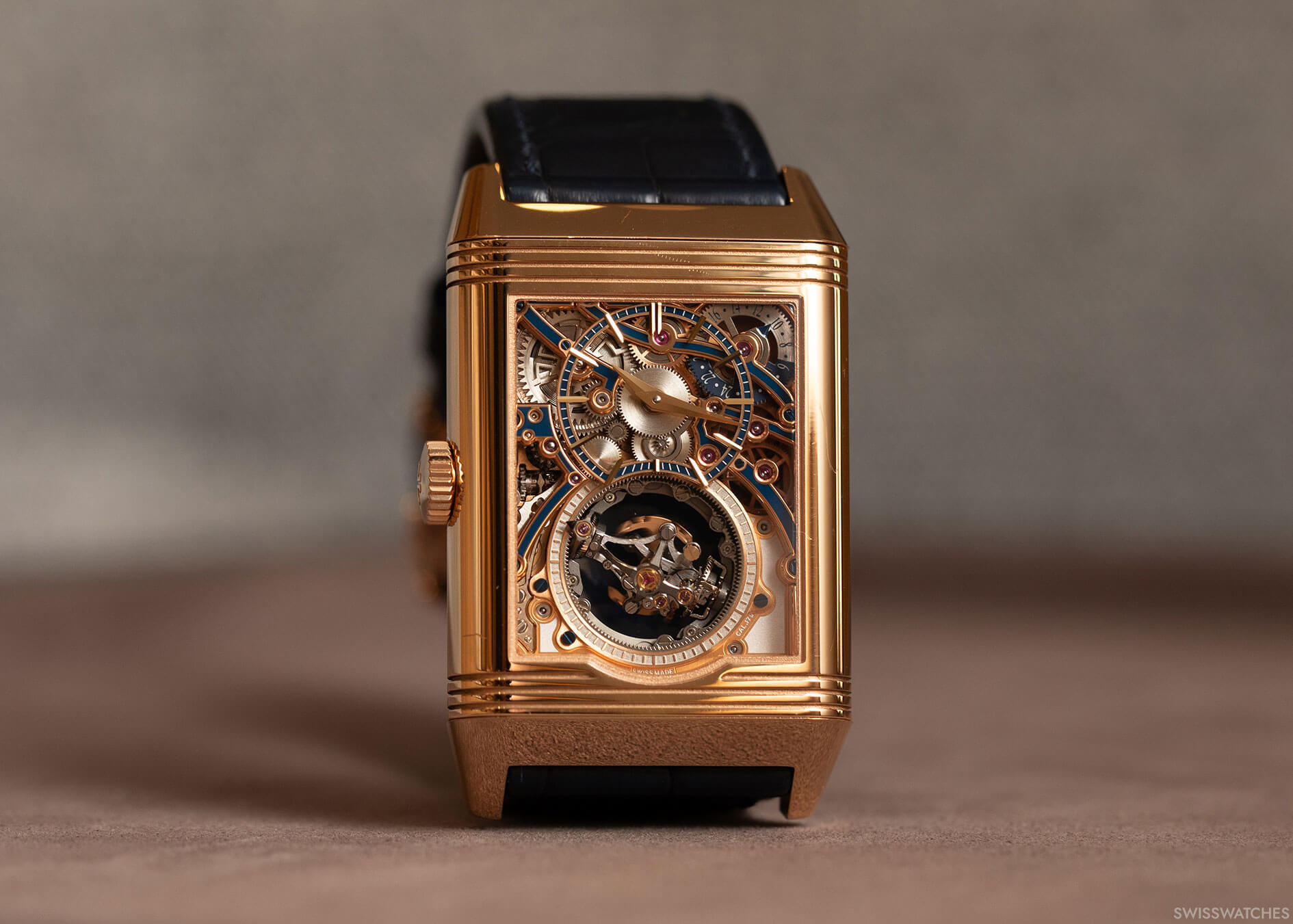
The crowning glory: Hybris Mechanica Calibre 185 Quadriptyque
Last but not least, the Reverso Travelling Collection plays host to the most complicated Jaeger-LeCoultre model ever made: the Hybris Mechanica Calibre 185 Quadriptyque. Where to start? This watch was first launched in 2021 in white gold, with a mere ten pieces available worldwide. Yet here, currently proudly installed in Munich, sits one of these very watches (although I’m not sure ‘watch’ does this magnificent, ethereal creation justice).

In any case, the watch plays host to no less than eleven complications. On the first face, the lucky wearer encounters an instantaneous perpetual calendar. Accompanying it is a flying tourbillon at an unusual 7 o’clock position, alongside a Grande Date with exposed discs, and a highly decorated central dial indicating the time.
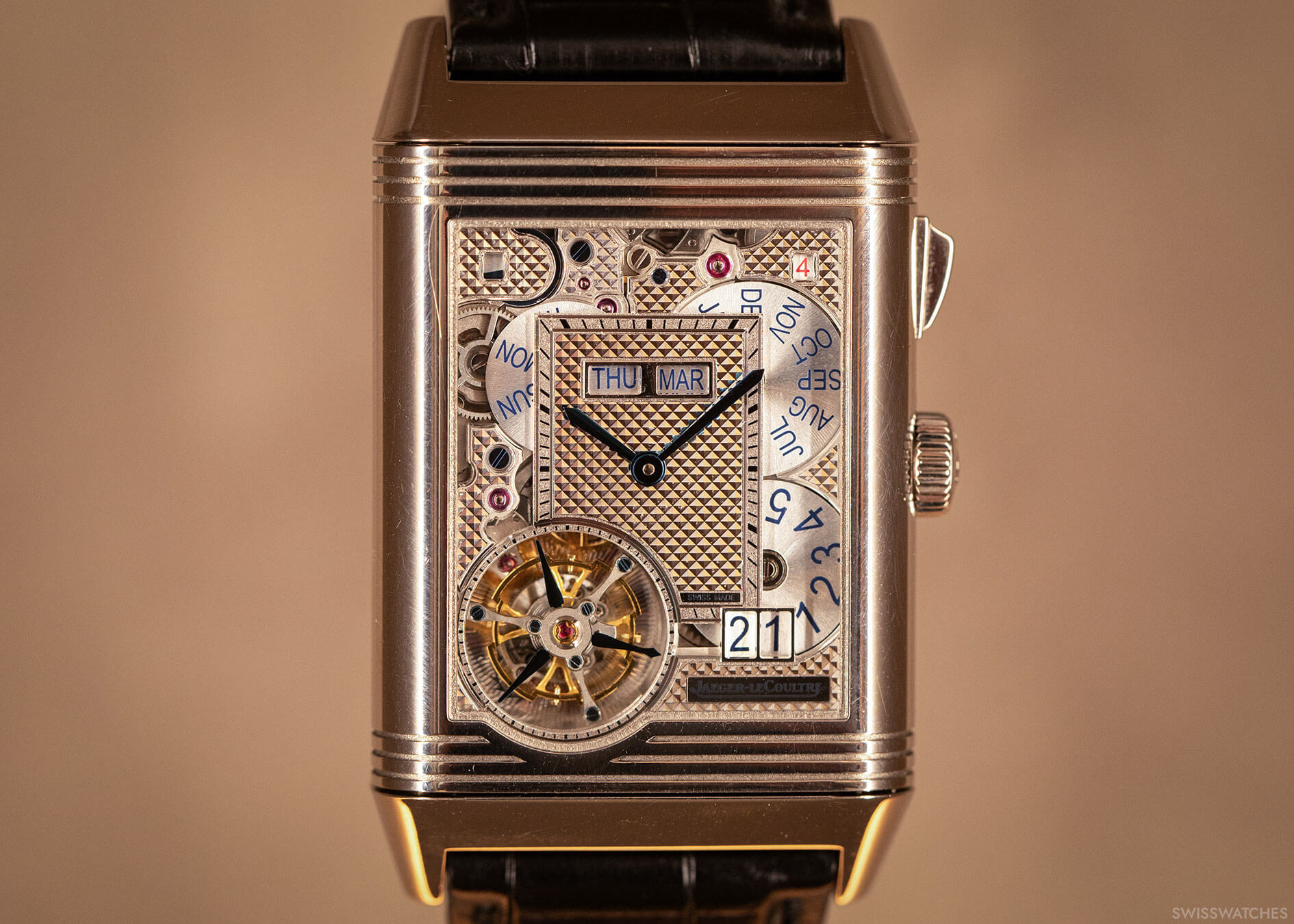
Meanwhile, the second face displays jumping hours and peripheral minutes, although these are actually driven by the minute repeater mechanism. Of course, this innovation has been patented. Furthermore, the minute repeater seamlessly chimes without any pauses between the hours, quarters, and minutes.
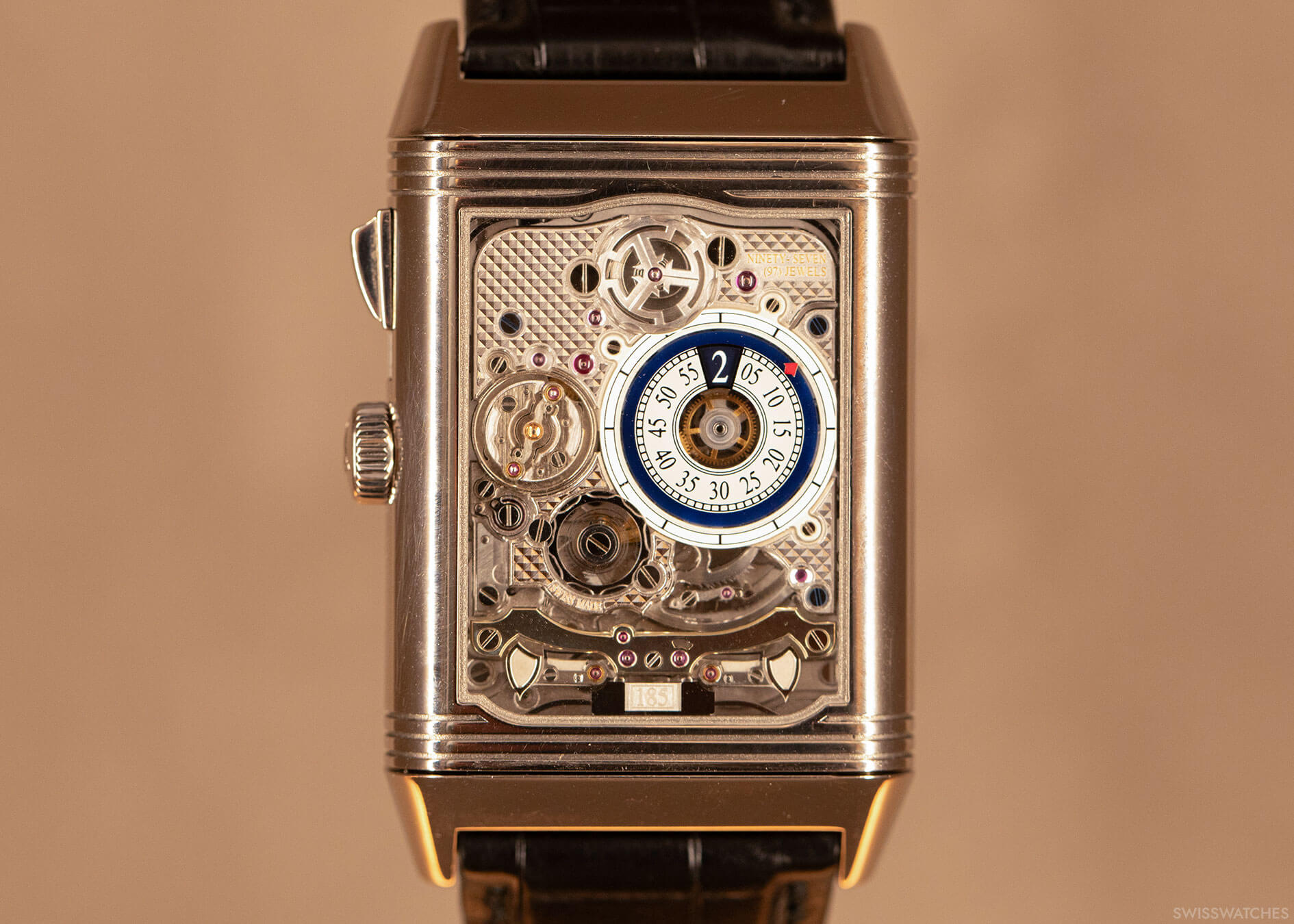
Perhaps the star of the show, however, is the third face, which displays the phases of the Moon in the northern hemisphere on the upper half of the dial – aka the synodic lunar cycle. By contrast, the lower half displays the anomalistic lunar cycle: this comprises a micro-painted domed interpretation of the Earth, surrounded by the Moon in eccentric orbit showing the various distance between the two planets. Also on the lower half is a demonstration of the draconic lunar cycle, indicating when the path of the Moon intersects with the orbit of the Earth around the Sun.
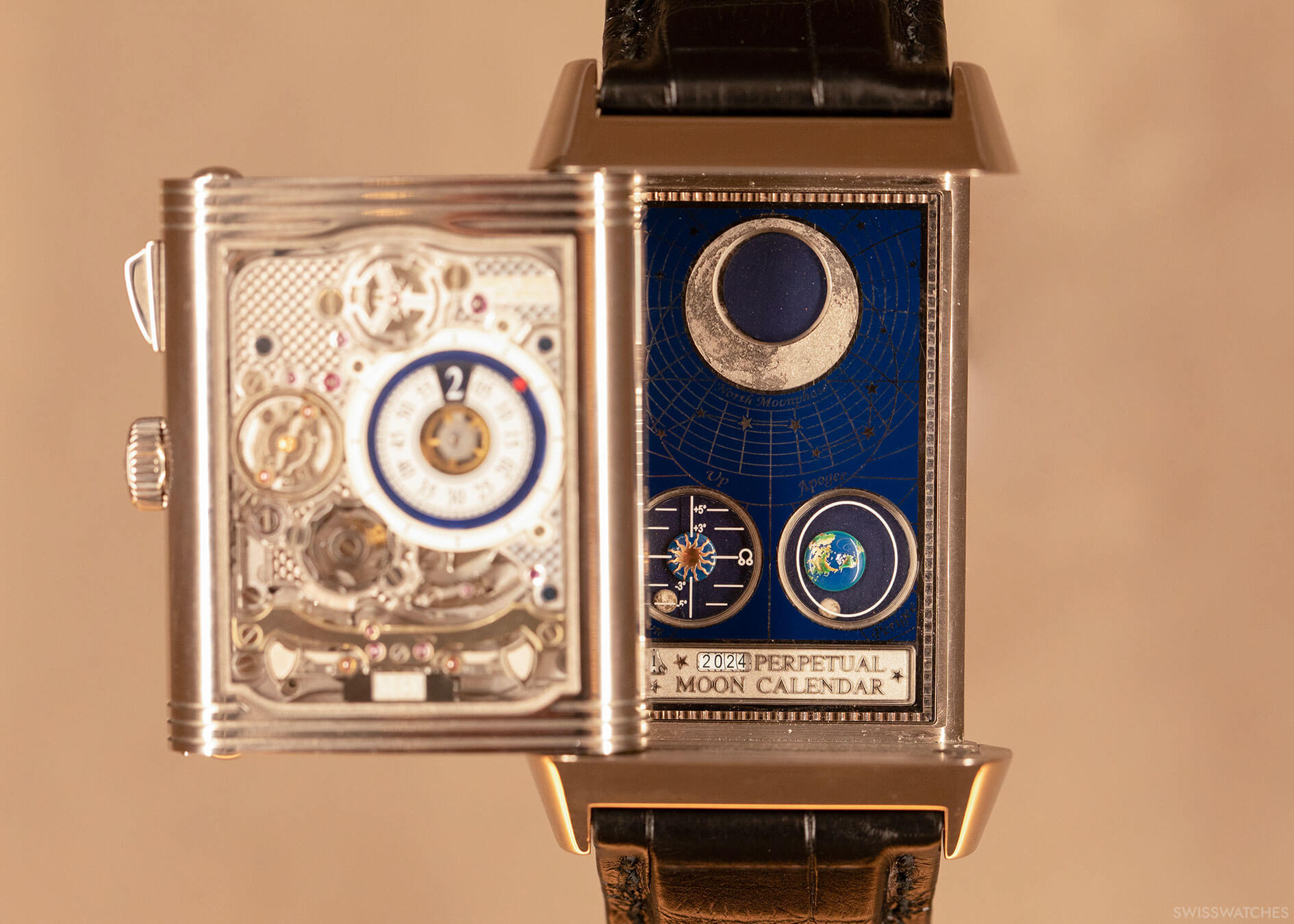
The fourth, final face showcases a representation of the phases of the Moon in the southern Hemisphere. A star-speckled sky chart, engraved and lacquered in a gradient of blue shades, forms the backdrop to the pink-gold rotating Moon. Despite its many watchmaking wonders, this timepiece still has a 50 hour power reserve.
The Reverso Travelling Collection: Embodying true horological mastery
Evidently, the Reverso has come an astoundingly long way, and all in under a century. Open to the public in Munich until July 13, 2024, the Reverso Travelling Collection carefully chronicles the mind-blowing journey this watch model has taken through art, design, and technological innovation over the decades – all while maintaining its reputation as Jaeger-LeCoultre’s most iconic and ground-breaking watch. To follow the collection’s endless stories of style, design, innovation and craftsmanship for yourself, make a trip to the boutique at Maximilianstrasse 24 for yourself by making an appointment in-store or online here.

